They Said These Historical Photos Were LOST FOREVER... Until Now!
14 Nov 2024Old historical photos — what could be more interesting? After all, they tell us about the past that we have heard about but never seen with our own eyes. We have collected the most interesting snaps for you, which will definitely not leave you indifferent.
Operation Power Pack
Operation Power Pack was a U.S. military intervention in the Dominican Republic in 1965. Its goal was to control a civil conflict that broke out after President Juan Bosch was removed in a coup. As violence grew between Bosch's supporters and the military-backed government, President Lyndon B. Johnson sent about 22,000 troops, hoping to stop what he viewed as a communist threat.
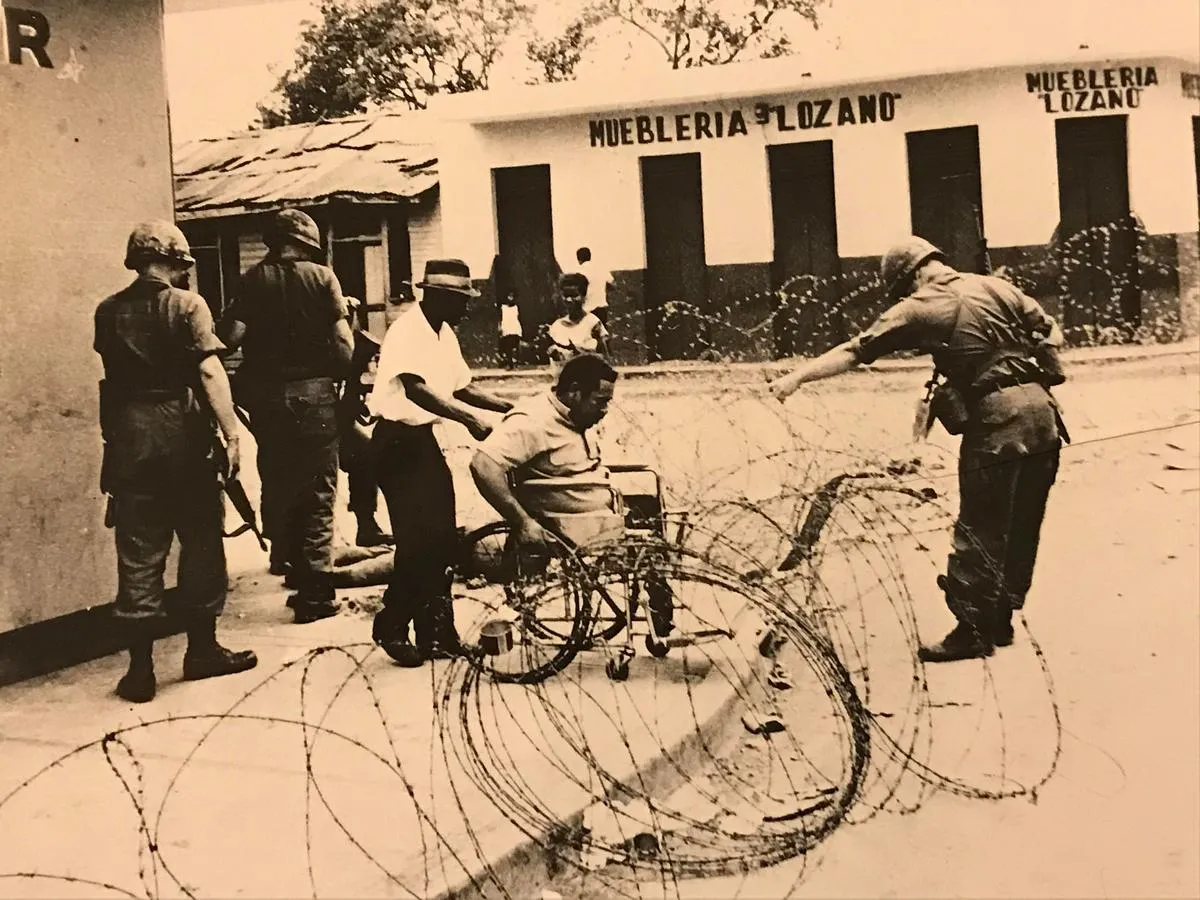
@stnkycaveape/reddit.com
Photos from the operation often show U.S. Marines on the streets of Santo Domingo, meeting with locals and setting up checkpoints. These images reflect the tense atmosphere, with soldiers in full gear among civilians. They highlight the complex role of U.S. activities in Latin America during the Cold War.
A Young Prisoner Is Suffering
A young prisoner in Seminole County, Georgia, faced brutal punishment on a chain gang. It was in 1932. For allegedly "talking back" to a guard, he was tightly bound in a stockade under the harsh Southern sun, left exposed with no means of shade or relief.
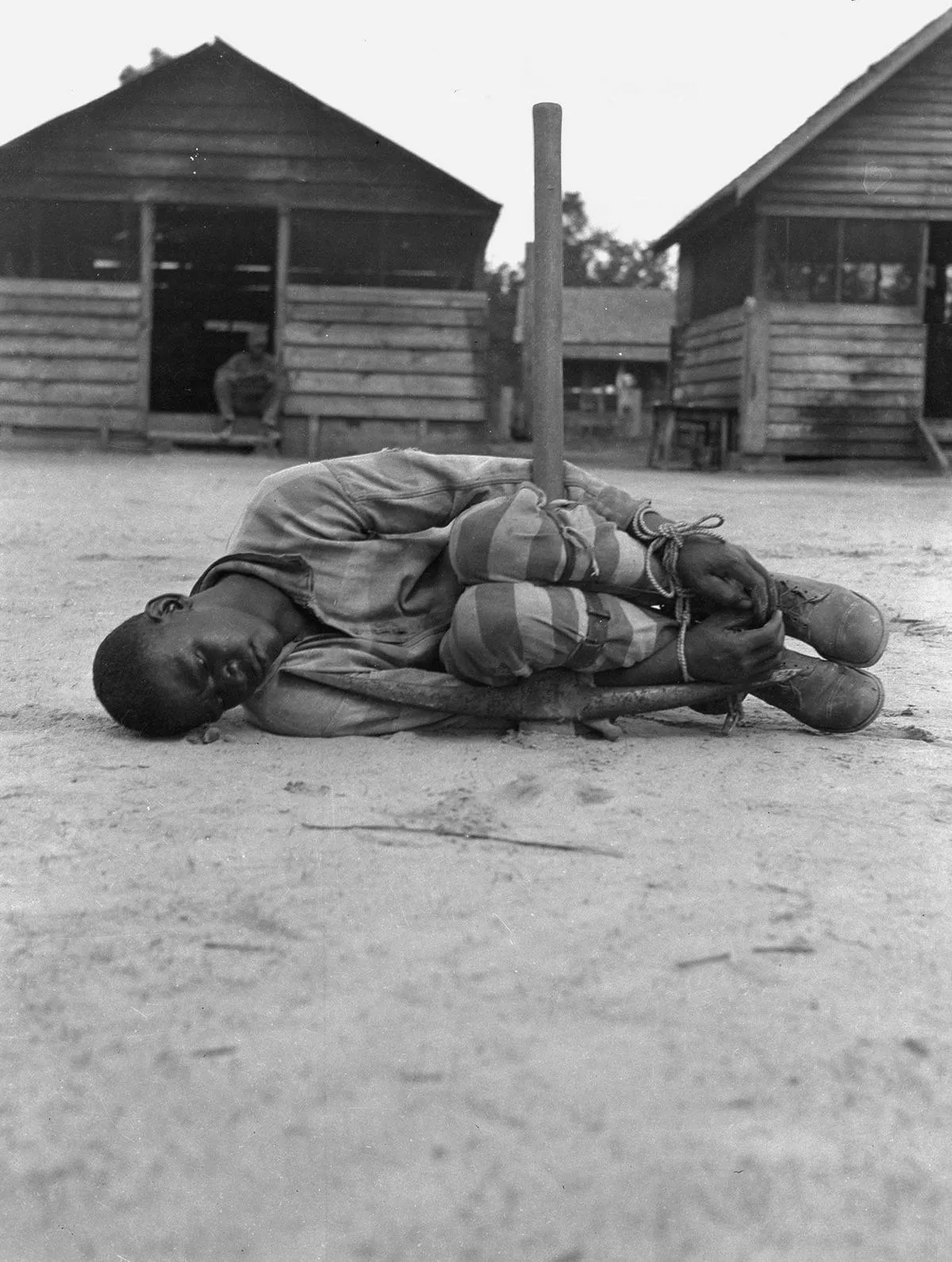
@Krampjains/reddit.com
This case highlights the harsh realities of the chain gang system, which combined forced labor with punitive treatment. Left outside for hours, the prisoner eventually fainted from heat exposure. Such incidents reflect the inhuman conditions and the lack of rights for prisoners in the early 20th century.
First Self-Portrait in Space
While on NASA's Gemini 12 mission, Buzz Aldrin was outside the spacecraft, completing a spacewalk. He used a camera attached to his space suit to capture himself floating above Earth. He took the first "selfie" in space.
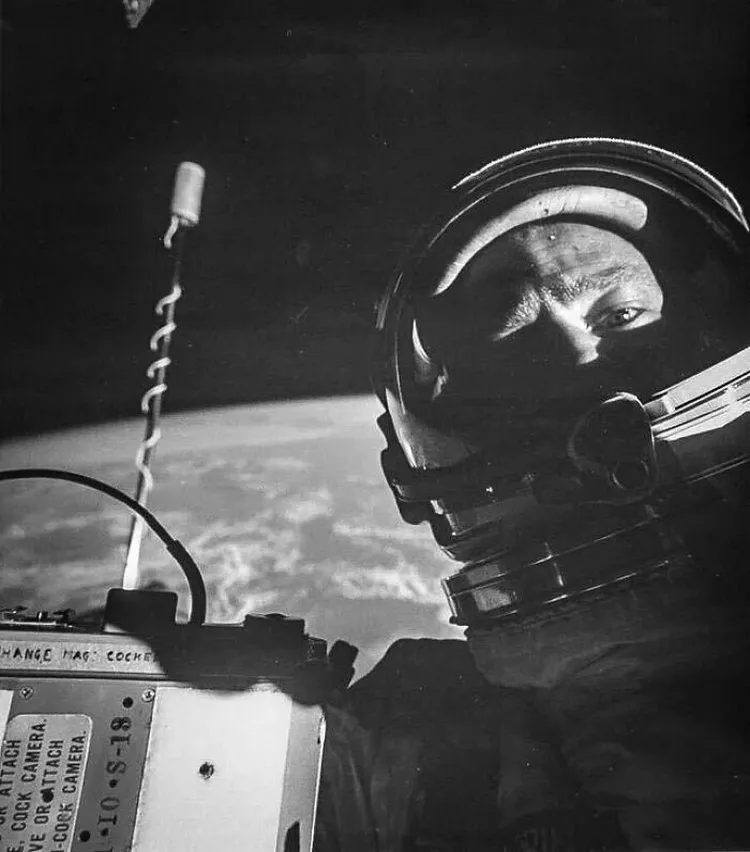
@HistoryInPics/x.com
This spacewalk was important because it allowed NASA to test how humans could work outside a spacecraft, an essential skill for future missions, like the moon landing in 1969. Aldrin’s photo became iconic, symbolizing the bravery of astronauts and the exciting possibilities of space exploration.
This Woman Survived the Atomic Bombing
In August 1945, an 18-year-old woman survived the atomic bombing of Nagasaki, Japan. On August 9, the United States dropped an atomic bomb on the city, causing massive destruction and loss of life. The bomb flattened buildings, started fires, and left much of the city in ruins.
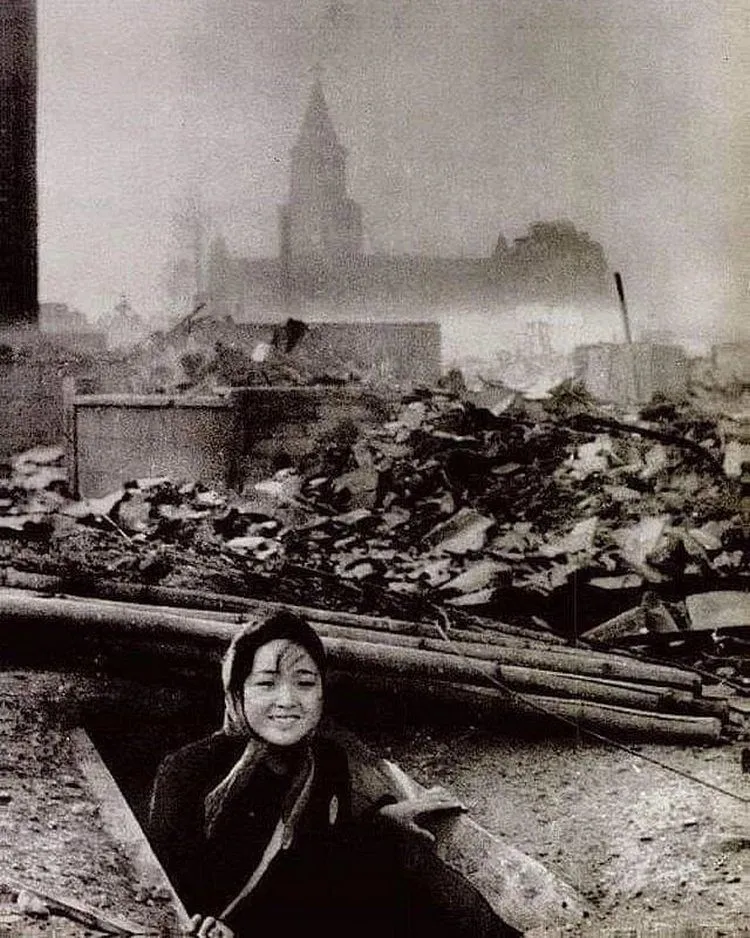
@HistoryInPics/x.com
The young woman, like many survivors, faced immediate danger from injuries, burns, and radiation. She endured severe hardships, including a lack of food, water, and medical care. The effects of radiation exposure caused long-term health issues, which were common among survivors.
After Triumph, Michael Jordan Learns of His Father's Death
Michael Jordan won the NBA Championship with the Chicago Bulls on Father’s Day in 1996. This victory held deep meaning for him because it came shortly after his father’s tragic death. Jordan’s father, James Jordan, had been his biggest supporter and attended many of his games. Losing him was a huge emotional blow for Michael.
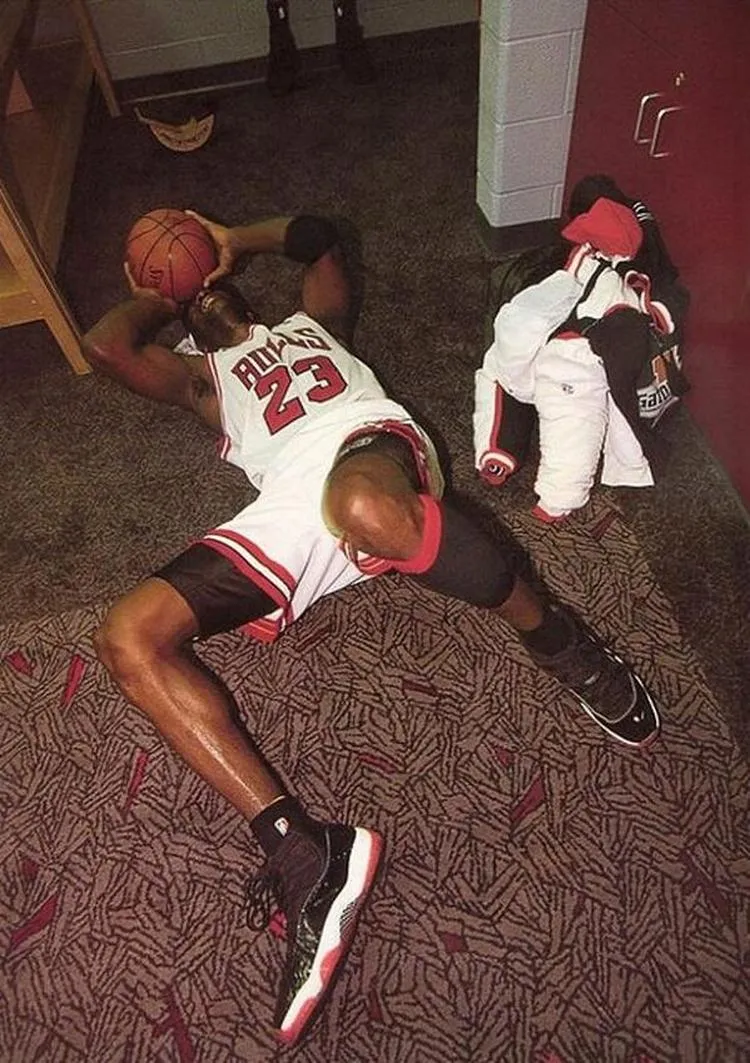
@HistoryInPics/x.com
After the championship win, the emotions were overwhelming. Jordan left the court, went into the locker room, and collapsed onto the floor. He started crying, releasing all the grief he had been holding. The moment was both heartbreaking and powerful, capturing how much his father meant to him.
Family Portrait with their Cat in Masks
During the Spanish Flu pandemic in 1918, a family posed for a portrait, each member wearing a protective mask—even their cat. The Spanish Flu was a deadly influenza virus that spread worldwide, infecting millions. To protect against the virus, people were encouraged to wear masks, especially in public spaces.
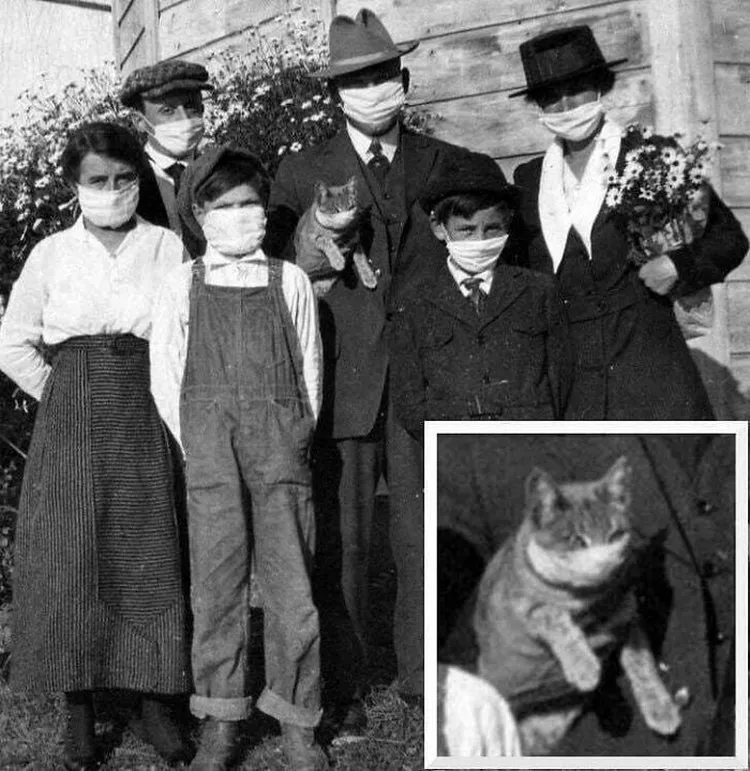
@HistoryInPics/x.com
This family portrait captures the seriousness of the pandemic and the collective effort to stop the spread of the flu. Masks became a symbol of safety. The cat wearing a mask adds a unique and touching detail, showing the lengths to which people went to protect their households.
The Statue of Liberty Before its Transportation to America
For the first time, the Statue of Liberty stood in Paris awaiting its journey to the United States. Unlike its green color today, Lady Liberty originally gleamed in a bright copper color. The statue was a gift from France to the United States, symbolizing friendship and the shared ideals of freedom and democracy.
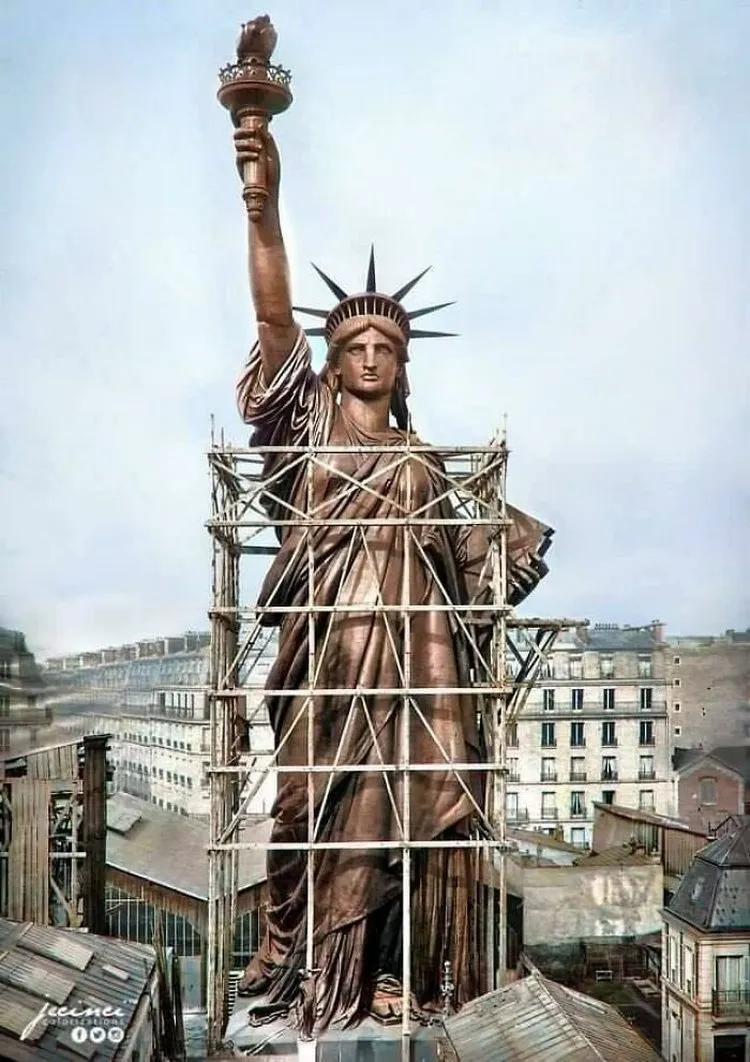
@HistoryInPics/x.com
Before its transatlantic voyage to New York Harbor, the Statue of Liberty was assembled in Paris to ensure all its parts fit together correctly. It was then disassembled into hundreds of pieces and carefully packed for the journey. After its reassembly, the statue was unveiled on Liberty Island on October 28, 1886. The copper gradually oxidized over time, giving it the green patina, we recognize today.
The New Rules of Driving in Sweden
On September 3, 1967, Sweden made a major change by switching from driving on the left side of the road to the right. This change, known as "Högertrafikomläggningen," took place overnight, with all traffic systems switching to the right at 5 a.m. the next morning.
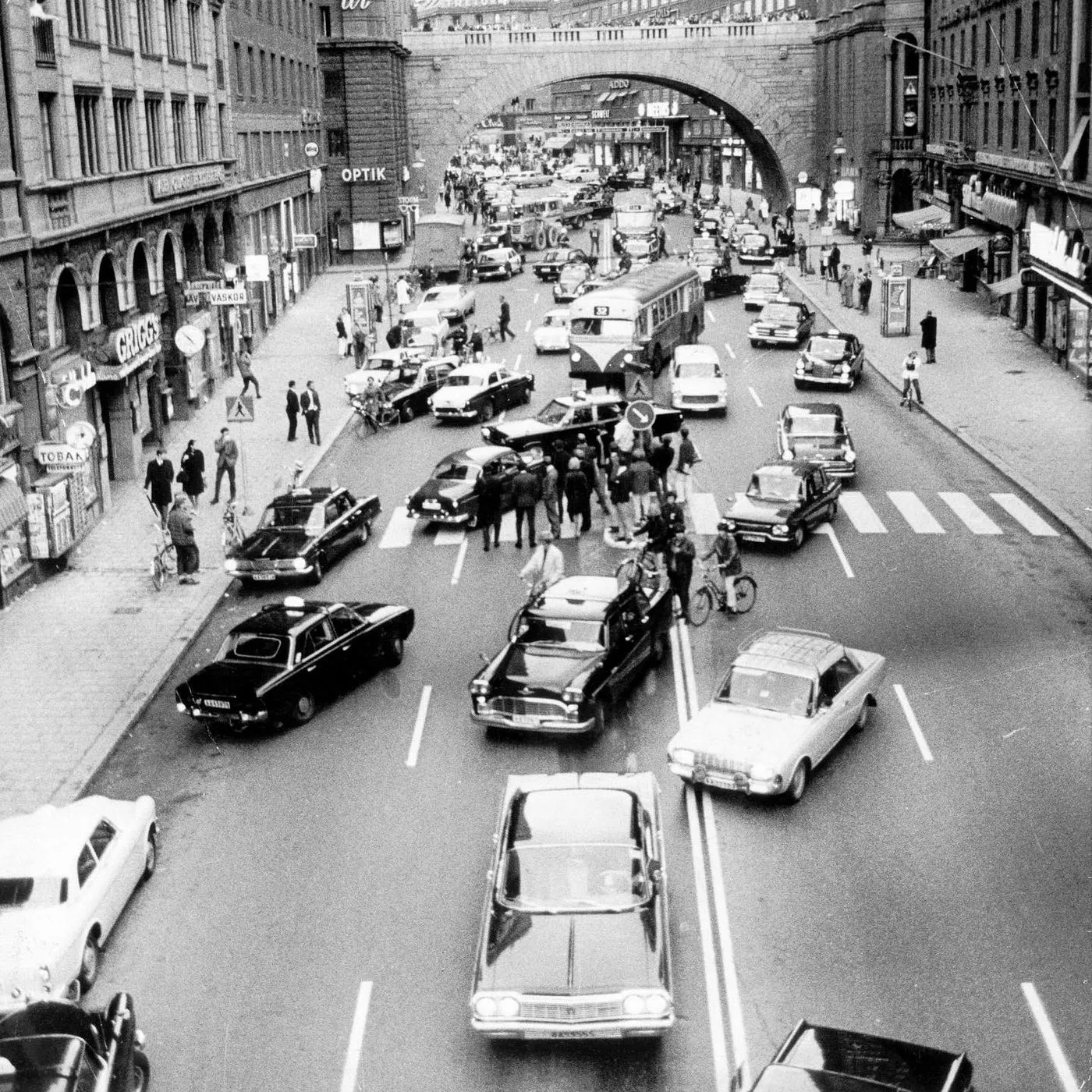
@HistoryInPics/x.com
The switch was a massive logistical challenge and required careful planning to ensure safety and smooth traffic flow. Despite the initial confusion, the transition was relatively successful, with fewer accidents than expected. This change was part of Sweden's effort to harmonize with the rest of Europe, where driving on the right side was already standard.
Jewish Prisoners for One Step to Death
The legendary photograph captures a moment of profound relief during the final days of World War II. In April 1945, Allied forces intercepted a train carrying Jewish prisoners. These people were taken to be executed but they were lucky.

@HistoryInPics/x.com
The soldiers of Coalition forces at that time advanced through Europe, pushing back Nazi control. This powerful image serves as a symbol of hope, survival, and the end of the Holocaust. It also highlights the bravery of the liberators who brought freedom to those who had suffered so much.
Before the Islamic Regime
Before the 1979 Islamic Revolution, Iran was more liberal. Under the Shah's rule, many women wore Western-style clothing, and there were no laws requiring the hijab. Women enjoyed greater freedoms in areas like education and employment.
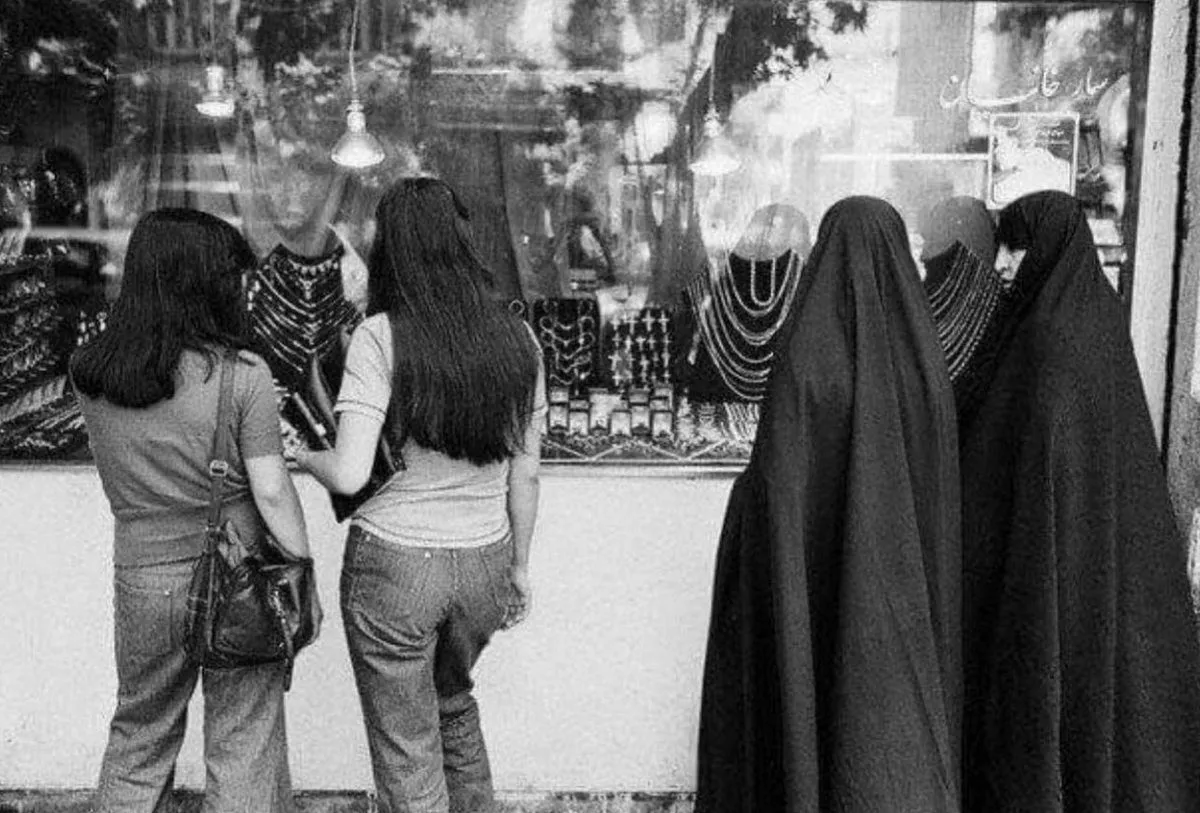
@HistoryInPics/x.com
However, after the revolution, the new Islamic regime enforced strict dress codes, making the hijab compulsory for all women. This marked a significant shift from the previous era, where wearing the hijab had been a personal choice. The change became a symbol of the regime's control over women's rights and freedoms.
The Knocker-Uppers
Before alarm clocks were reliable, "knocker-uppers" were hired to wake workers for their early shifts. Such people earned six pence a week by shooting dry peas from a pea shooter at workers' windows to get them up. This job was common in industrial areas where early shifts were crucial.
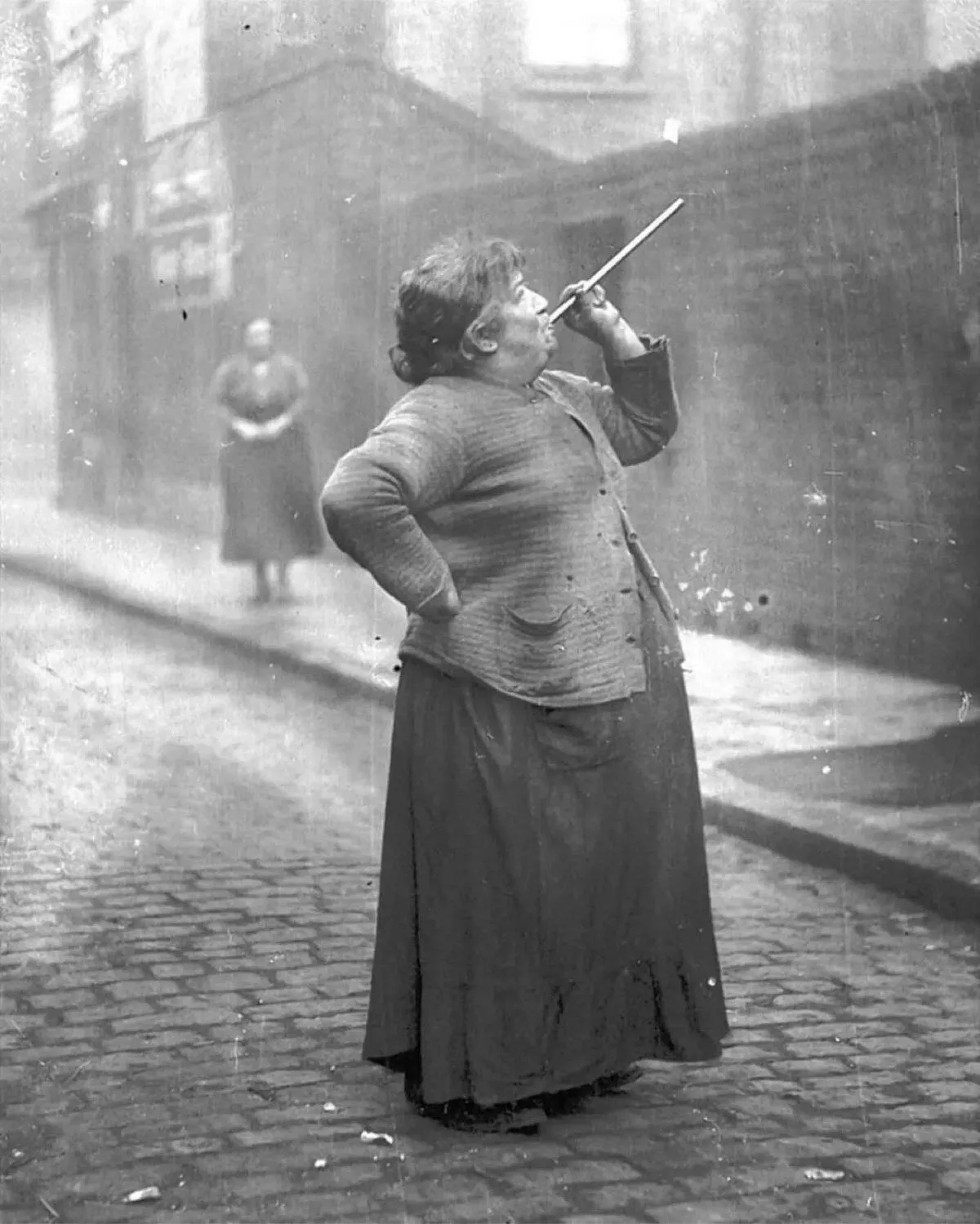
@HistoryInPics/x.com
Each morning, they would walk the streets, ensuring everyone was awake. The pea shooter was an effective tool—it made noise without breaking the windows. By the 1940s and 1950s, this profession had largely disappeared, though it persisted in a few areas of industrial England until the early 1970s.
The Wood Selfie Stick
In 1957, long before smartphones and modern selfie sticks, a man took a selfie with a simple stick of wood. Cameras at the time didn’t have timers or remote controls. The man set up the camera on a tripod and used the stick to press the shutter button.
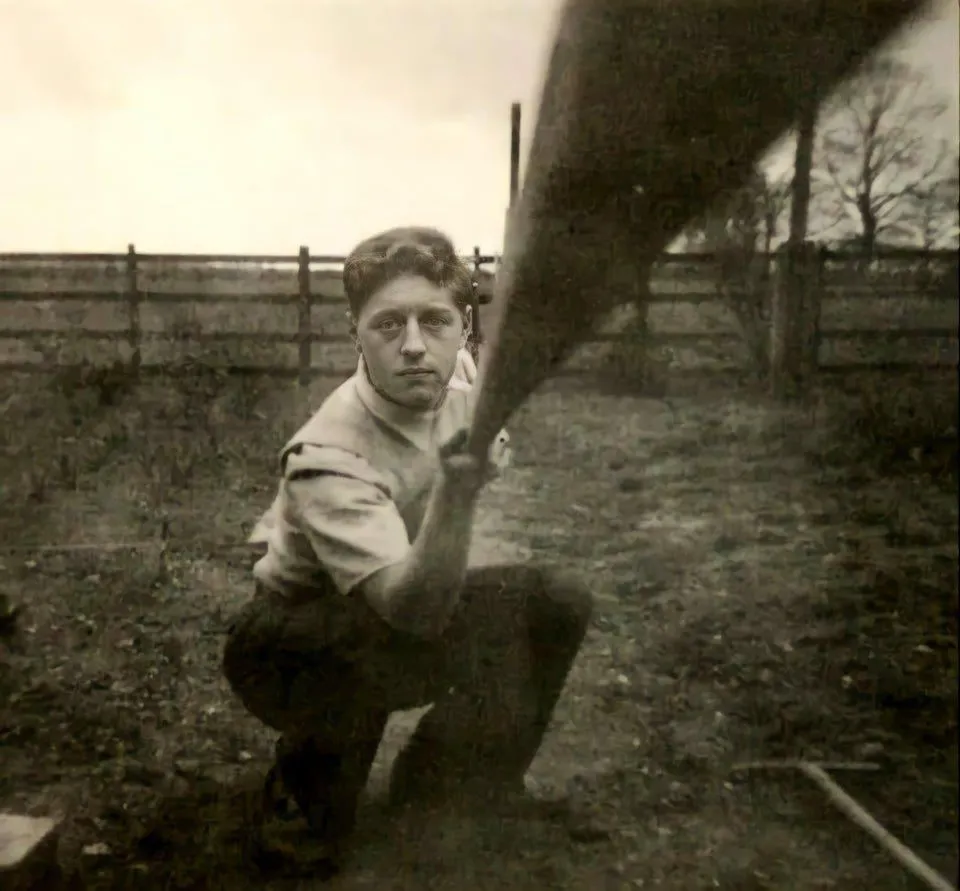
@HistoryInPics/x.com
To capture the shot, he had to time it perfectly, rushing into position before the camera clicked. This early selfie shows how people were already experimenting with ways to take self-portraits, long before the rise of selfie culture.
A Photo that Draws Attention to Human Rights During the Iraq War
Abdou Hussain Saad Faleh, a detainee at Abu Ghraib prison in Iraq, was photographed standing on a box with wires attached to his hands. It happened on November 4, 2003. Hooded and forced to balance, he was told by U.S. Army guards that he would be electrocuted if he fell. This image became a symbol of the mistreatment of prisoners at Abu Ghraib.
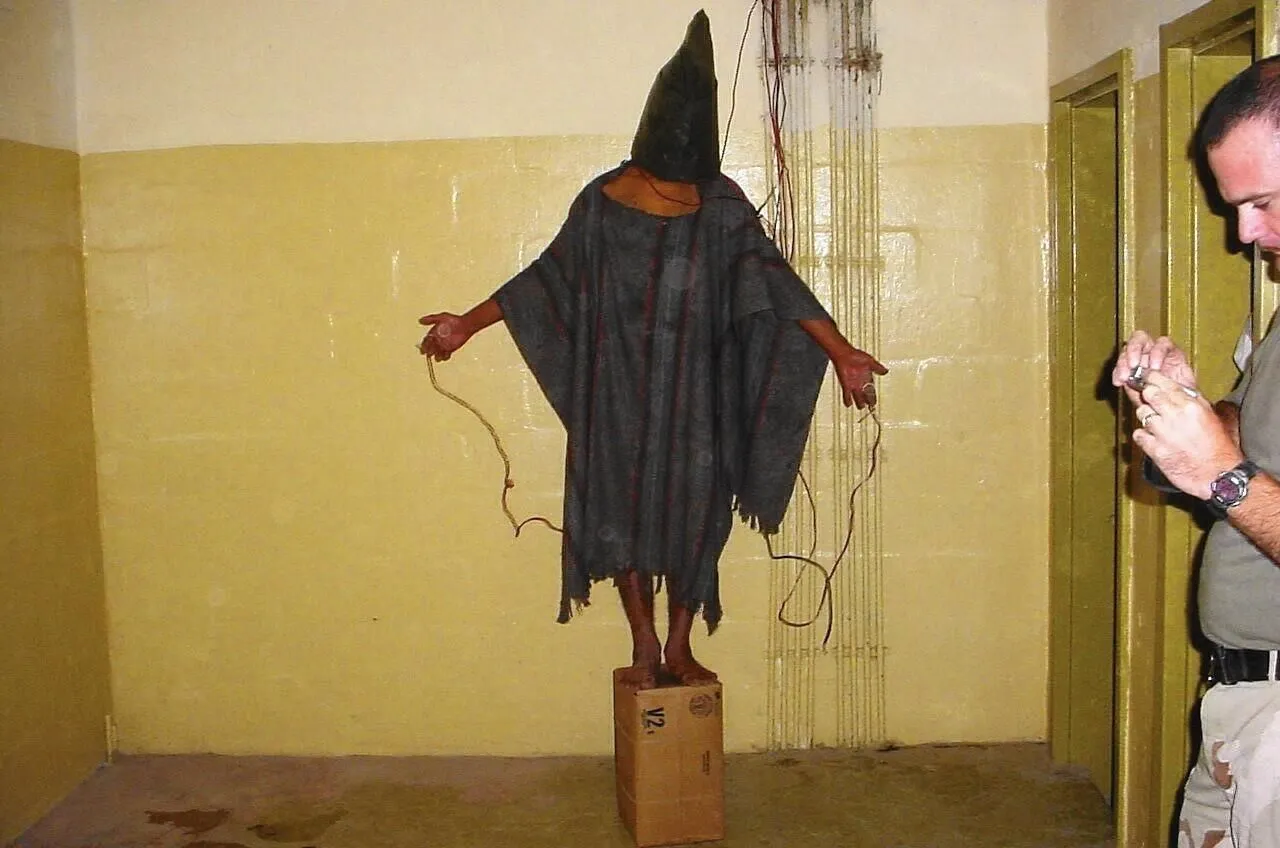
@HeStoleMyBalloons/reddit.com
There detainees faced severe psychological and physical abuse. When released, the photo caused global outrage and brought scrutiny to the U.S. military’s actions in Iraq. The incident at Abu Ghraib highlighted the critical importance of upholding human rights, even in conflict zones, and had a lasting impact on perceptions of the Iraq War.
The Movement for Reproductive Rights
In this photo, a young woman holds a sign advocating for a woman's right to abortion at a protest in Madison, Wisconsin. The demonstration was triggered by the closure of the Midwest Medical Center, one of the few abortion clinics in the area. Authorities had shut it down, saying it had performed over 900 abortions, violating Wisconsin’s abortion laws.
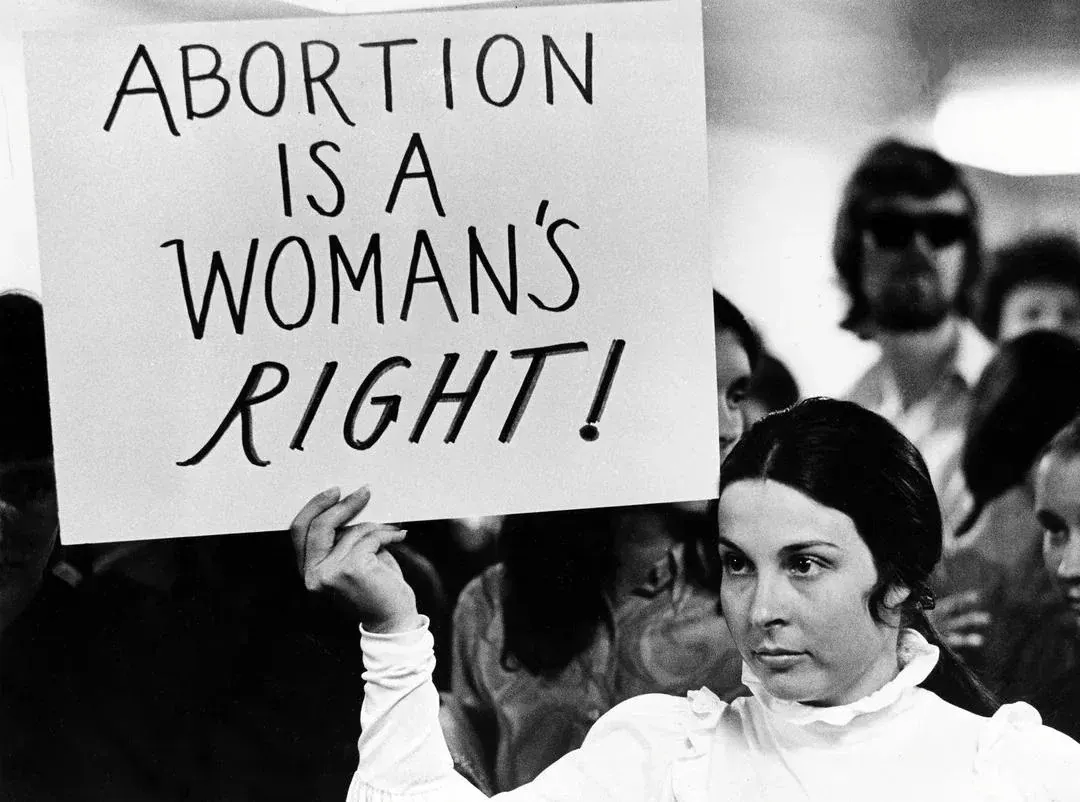
@Dazzling-Pudding6256/reddit.com
This demonstration was part of a larger movement for reproductive rights in the early 1970s. Activists were fighting for safe and legal access to abortion. The woman's sign symbolized the growing demand for autonomy and control over women’s healthcare choices.
A Boy Who Worked Alongside Adults
In 1916, five-year-old Harold Walker picked 20 to 25 pounds of cotton daily in Oklahoma. Despite his young age, he worked in the fields alongside adults. It was a time when child labor was common, especially in agricultural regions of the United States.
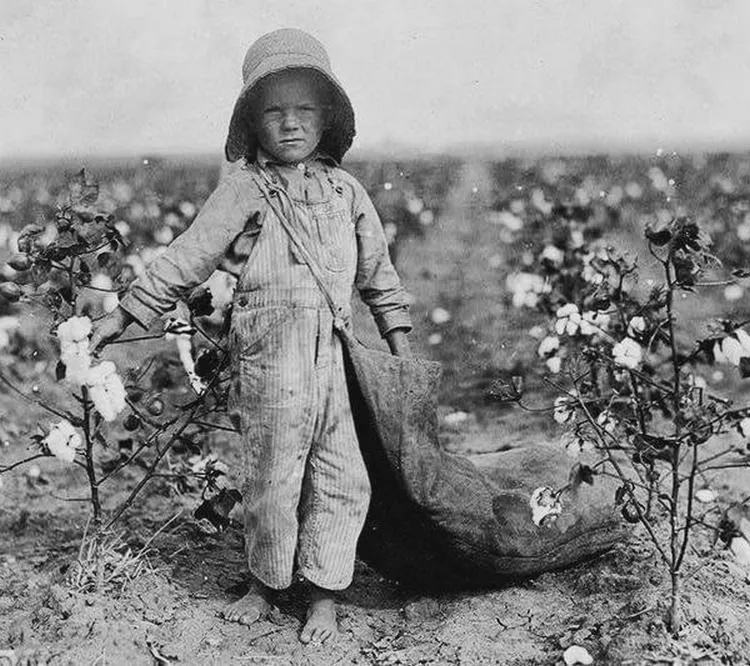
@funtoybb/reddit.com
Harold's photograph reflects the harsh conditions that children faced during those years. They were involved in physically demanding labor to help families earn a living. This story was one of many that drew attention to the issue of child labor, leading to the passage of laws that protect children's rights and restrict their work in such conditions.
North Korean Leader Kim Il Sung with a Tumor that was Hidden
In this rare photo from the late 1980s, North Korean leader Kim Il Sung is seen with a tumor on the right side of his neck. This growth was a sensitive subject in North Korea. Strict rules prohibited photographers from capturing his right side to hide it.
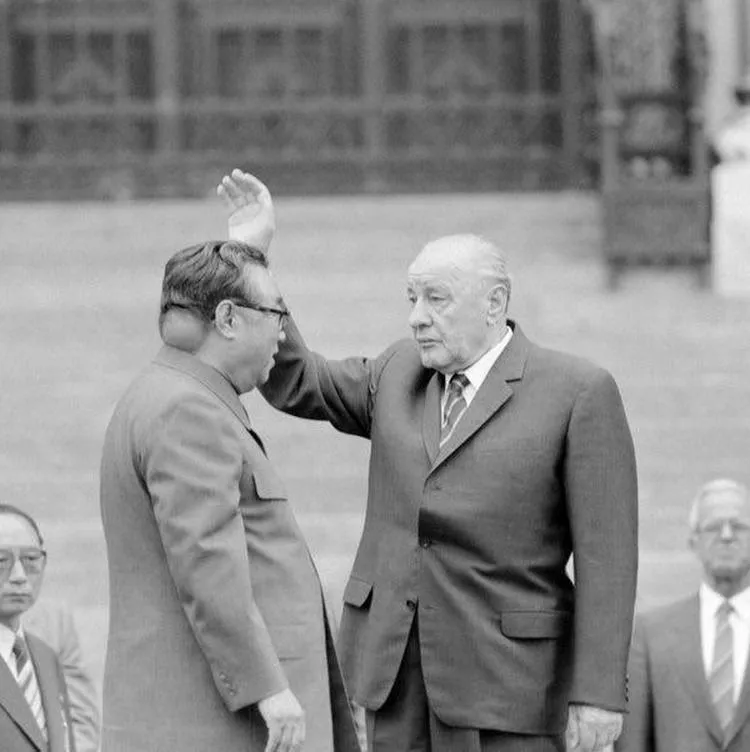
@Nearby_Pack5471/reddit.com
The government carefully controlled Kim Il Sung’s public image, presenting him as strong and flawless. Although officials and citizens were aware of the tumor, it was rarely visible in official photos or appearances.
A Proto-version of FaceTime
The View Phone, developed by Toshiba in 1964, was an early video phone. It allowed real-time visual communication—essentially a proto-version of FaceTime. The device lets users see and hear each other at the same time, a groundbreaking concept.
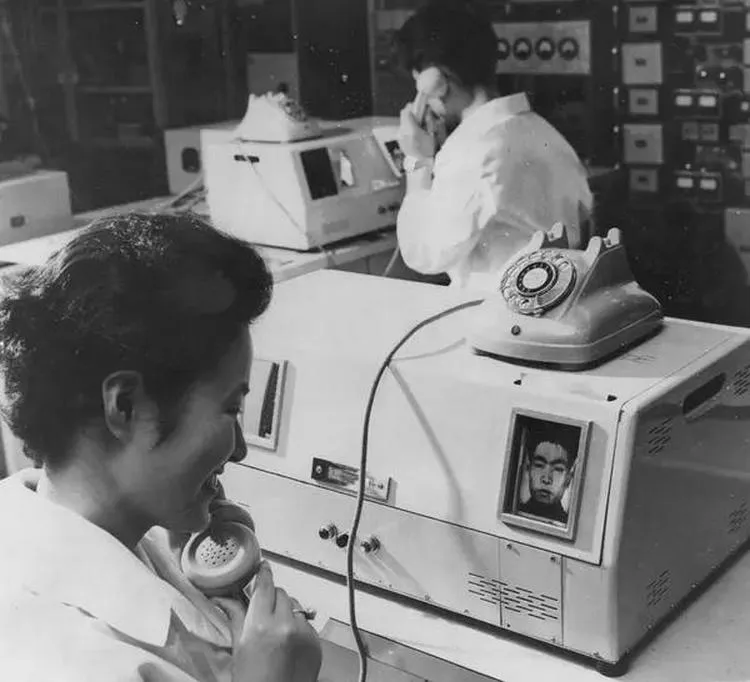
@Baby-Girl188/reddit.com
Designed to transmit both audio and video over phone networks, it offered a futuristic experience for its time. Although the View Phone didn’t gain wide adoption, it was an important step in technology. It showed early interest in visual communication and foreshadowed modern video calling.
Children Save from the Heat
In the sweltering summers of early 20th-century New York City, a curious sight could be seen: families sleeping on fire escapes. With no air conditioning and poorly ventilated, overcrowded apartments, the city's tenements became stifling furnaces. The fire escapes, originally designed as emergency exits, offered a precarious but welcome respite from the heat.
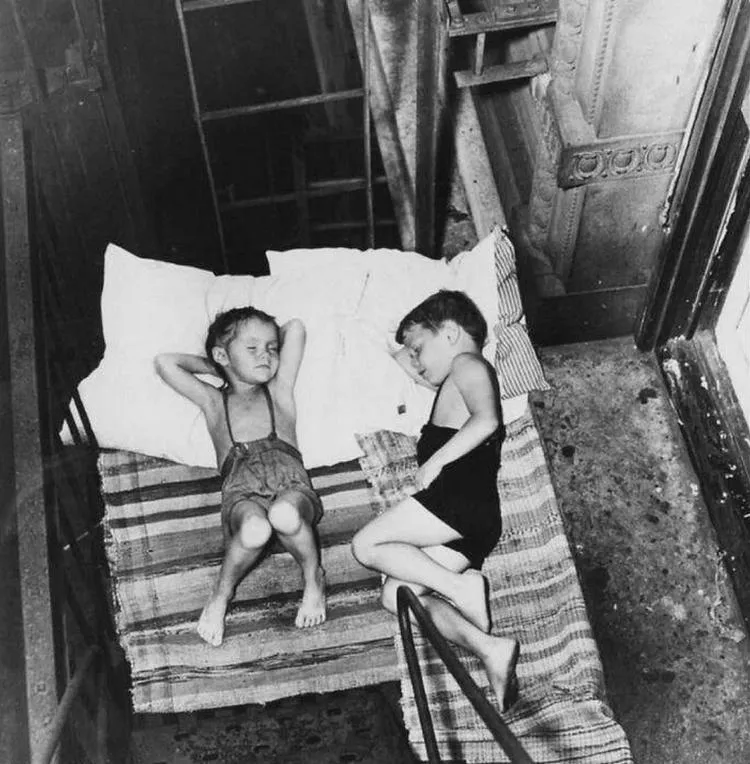
@wildvibetoy/reddit.com
As temperatures soared, families would haul mattresses, pillows, and blankets onto these narrow, metal platforms, turning them into makeshift bedrooms. While this practice was undoubtedly risky, it provided a measure of comfort and relief for those who had few other options.
The First Dog in Space
Laika, the first dog in space, was sent into orbit by the Soviet Union in 1957. She was launched aboard Sputnik 2, becoming the first living creature to travel into space. However, no plans were made for her return. Laika died in space, a tragic outcome due to the extreme conditions aboard the spacecraft.
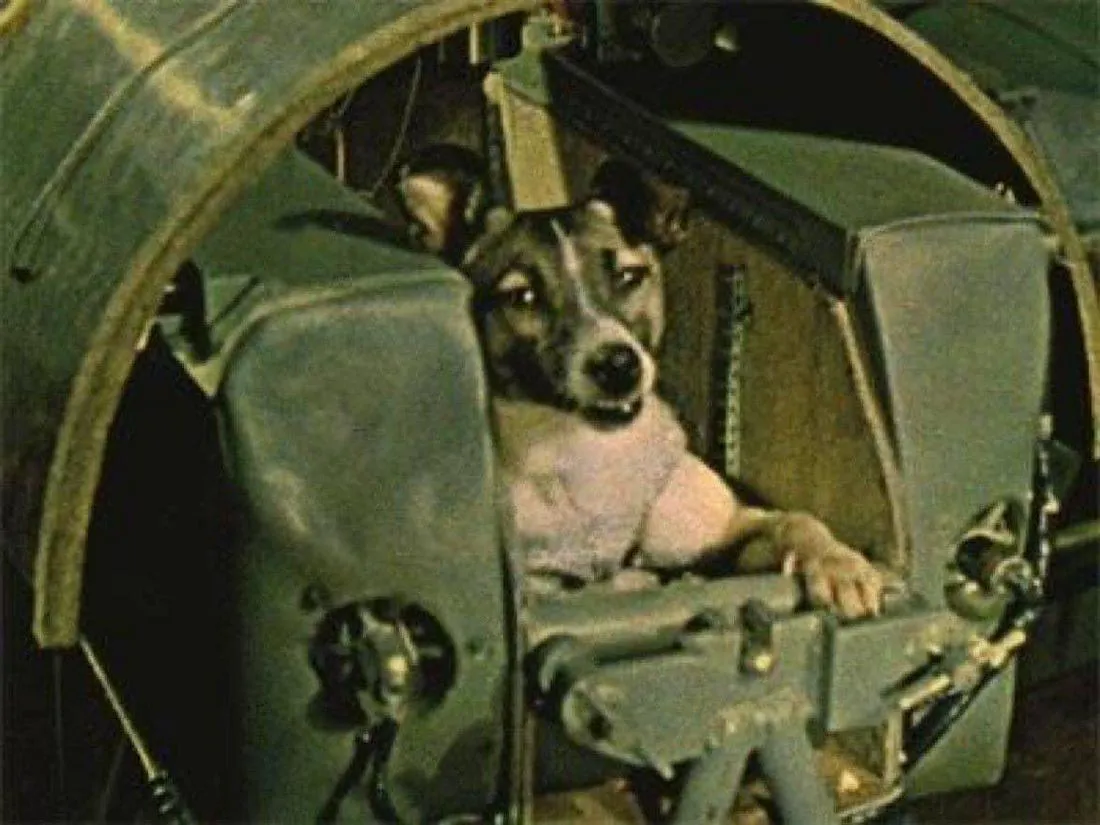
@miss_lisila69/reddit.com
Her journey helped scientists learn more about space travel but her sacrifice raised ethical concerns about the treatment of animals in early space exploration. Laika's mission was a landmark event in the space race, tragically revealing the harsh realities and technological limitations of space exploration at the time.
The Experimental Car Wash
Before the invention of modern car washes, people experimented with different methods to clean vehicles. One unusual idea involved cars driving in a circular motion through a tank of water. The concept was that as the car moved around the loop, the water would wash the car.
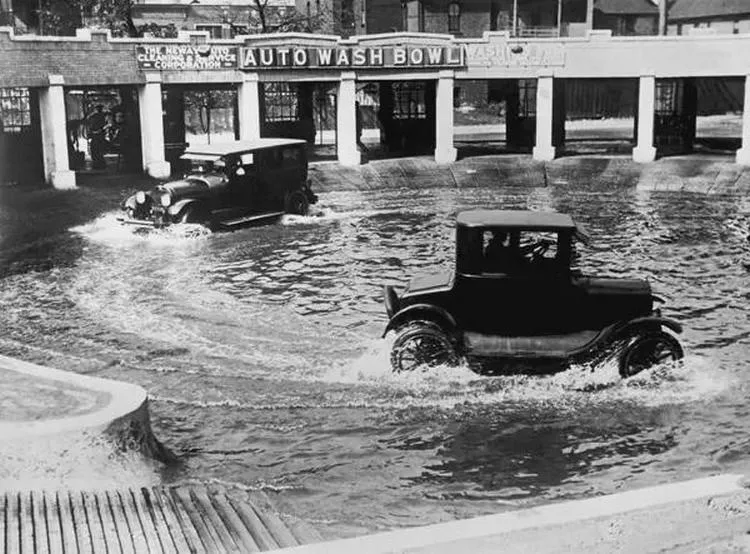
@Fly_With_MeNow/reddit.com
The idea seemed clever at the time but it didn’t provide the thorough cleaning that people expected. Over time, these primitive methods evolved into the fully automated car washes we have today, which use powerful brushes, water jets, and soap dispensers to clean cars much more efficiently. The circular water method is now seen as a quirky part of car washing history.
The Place Where Children Rode on the Backs of Alligators
The California Alligator Farm was a one-of-a-kind attraction in Los Angeles, operating from 1907 until the late 1950s. Located first in Lincoln Heights and later in Buena Park, the farm became famous for its unusual approach to showcasing alligators. Unlike modern zoos with strict safety measures, visitors were able to get remarkably close to these reptiles.
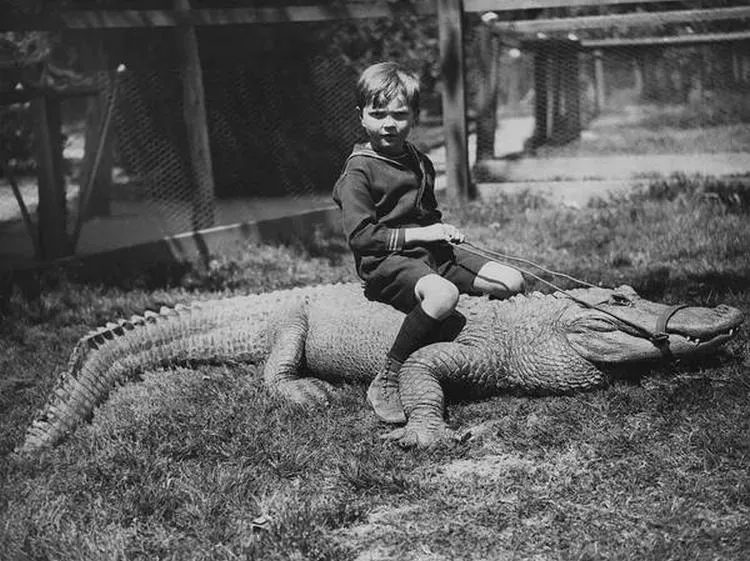
@Baby-Girl188/reddit.com
Children were even encouraged to take photos while sitting on the backs of tame alligators or riding them. The farm had hundreds of alligators and crocodiles, ranging from baby hatchlings to massive adults. Eventually, changing attitudes toward animal welfare and public safety led to its closure but the farm remains a fascinating part of California’s history.
The Incredible School Bus
In the 1930s, some rural areas in the United States used a unique type of school bus—a wooden "house" structure mounted on a wheeled frame and pulled by horses. These early school buses offered basic shelter to students on their way to school.
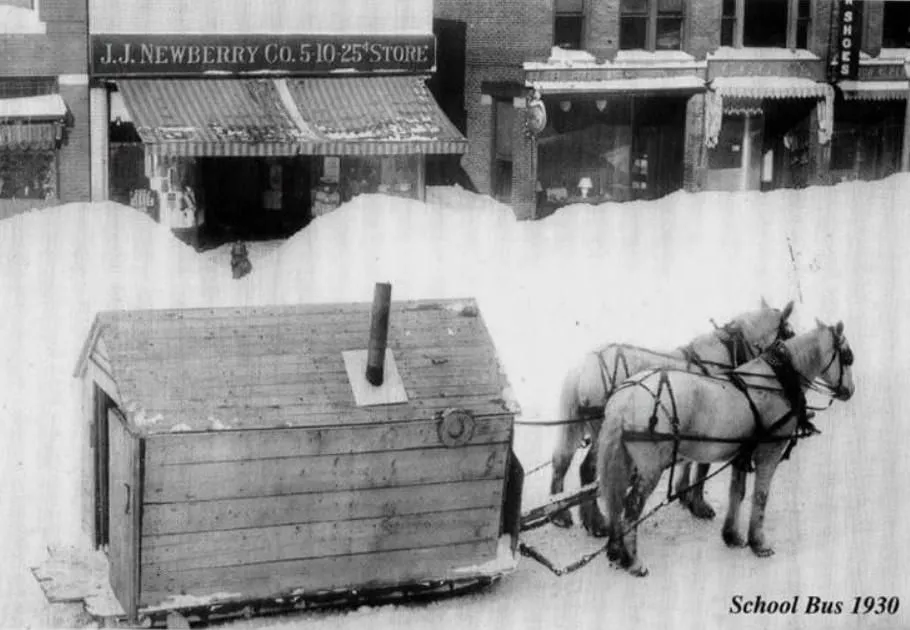
@HealthyAttempt1/reddit.com
The horse-drawn bus had limited seating. The students would often huddle together in cold weather to keep warm, as there was no heating system. Though slow and rustic, these buses provided an essential service for children living far from school, allowing them to access education more easily.
Artificial Intelligence Beats Garry Kasparov
On May 11, 1997, IBM's Deep Blue computer made history by defeating world chess champion Garry Kasparov in New York. This victory was the first time an artificial intelligence had beaten a reigning champion in a full match, showcasing the potential of advanced computing.
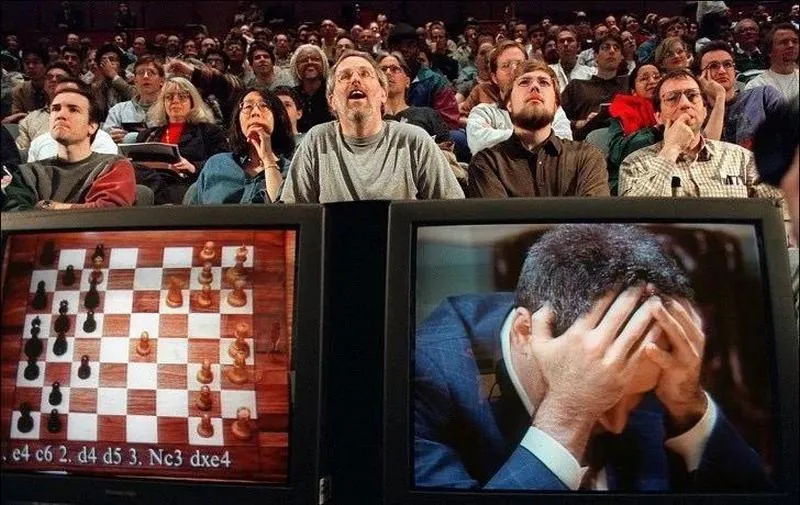
@ua-stena/reddit.com
Deep Blue's sophisticated algorithms allowed it to analyze millions of moves per second, giving it a strategic edge over Kasparov. The final score of the six-game match was 3.5–2.5 in Deep Blue’s favor. This milestone sparked new discussions about AI’s role in human activities and its future impact.
The Famous Photo of the Builders
Lunch Atop a Skyscraper is an iconic photograph from 1932, depicting 11 construction workers seated on a steel beam far above New York City. The men are casually eating lunch, reading newspapers, and chatting. They’re seated without safety equipment, hundreds of feet above ground.
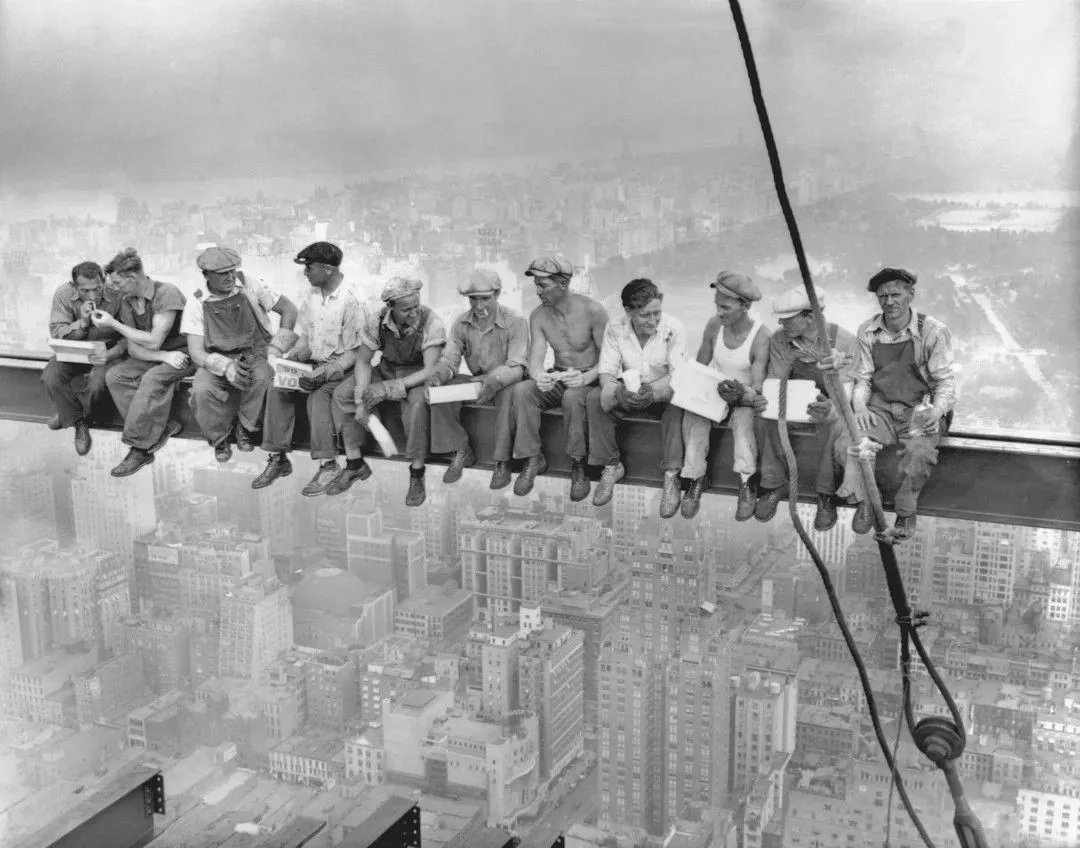
@itsbriannahere/reddit.com
The photo was taken during the construction of the RCA Building, now known as 30 Rockefeller Plaza. The photographer of this snap was Charles C. Ebbets. The photo symbolizes resilience and risk during the Great Depression.
Patient Buys Cigarettes in the Hospital
In the 1950s, it wasn’t unusual for hospital patients to buy or even be offered cigarettes from their hospital beds. At the time, the health risks associated with smoking were not yet widely recognized, and cigarettes were often considered a way to relax or relieve stress—even in medical settings.
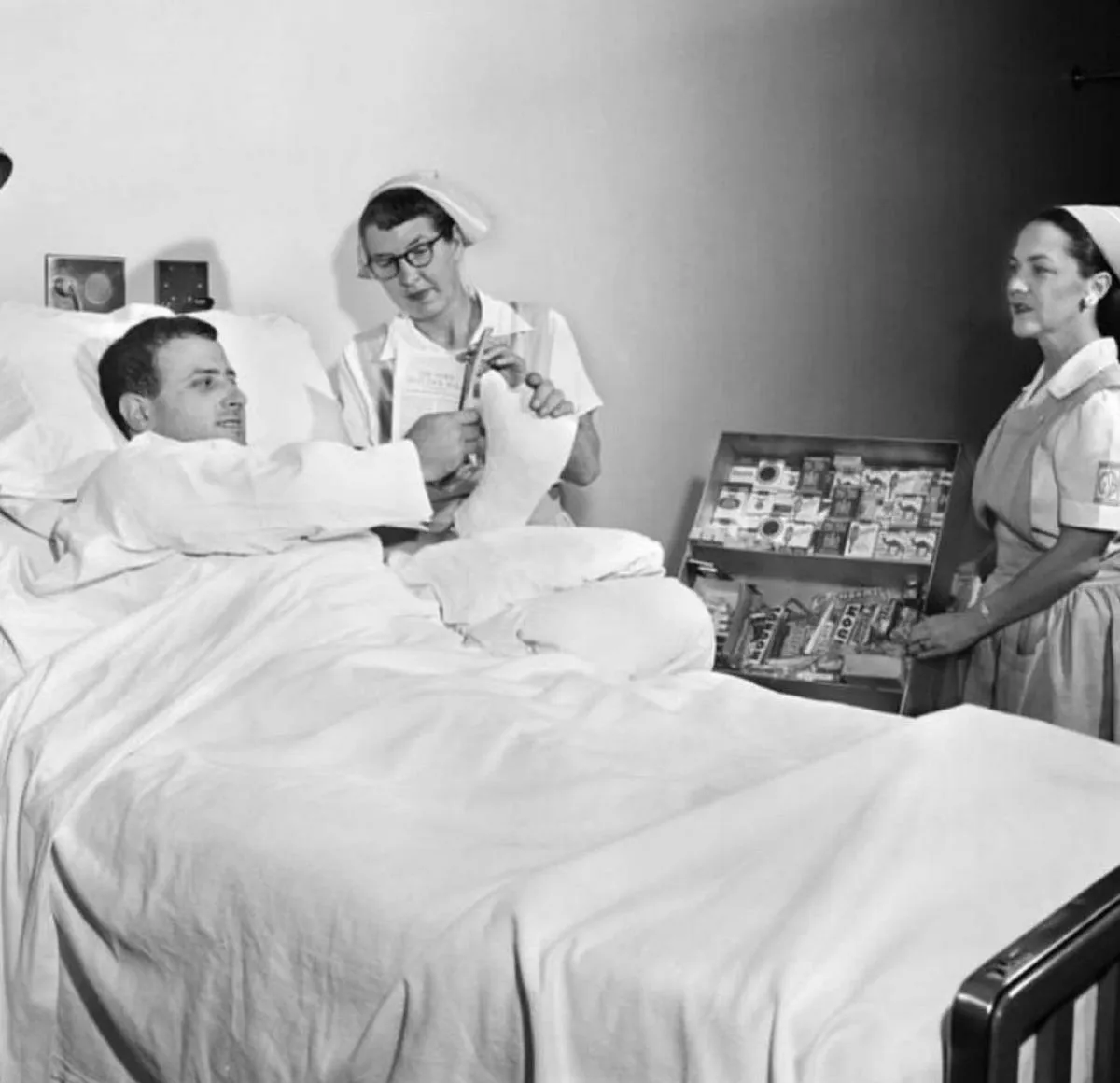
@Seraphenigma/reddit.com
Hospitals sometimes had cigarette vending machines or attendants who would bring cigarettes directly to patients. This image of a patient casually buying cigarettes from bed captures a now-surprising aspect of mid-20th-century hospital culture.
The Storm That Shook the Nation
The Great Blizzard of 1888 ravaged the United States. The storm buried cities and towns under massive amounts of snow, leaving communities from Virginia to Maine immobilized. This unprecedented storm claimed over 400 lives and disrupted infrastructure in ways never before experienced.
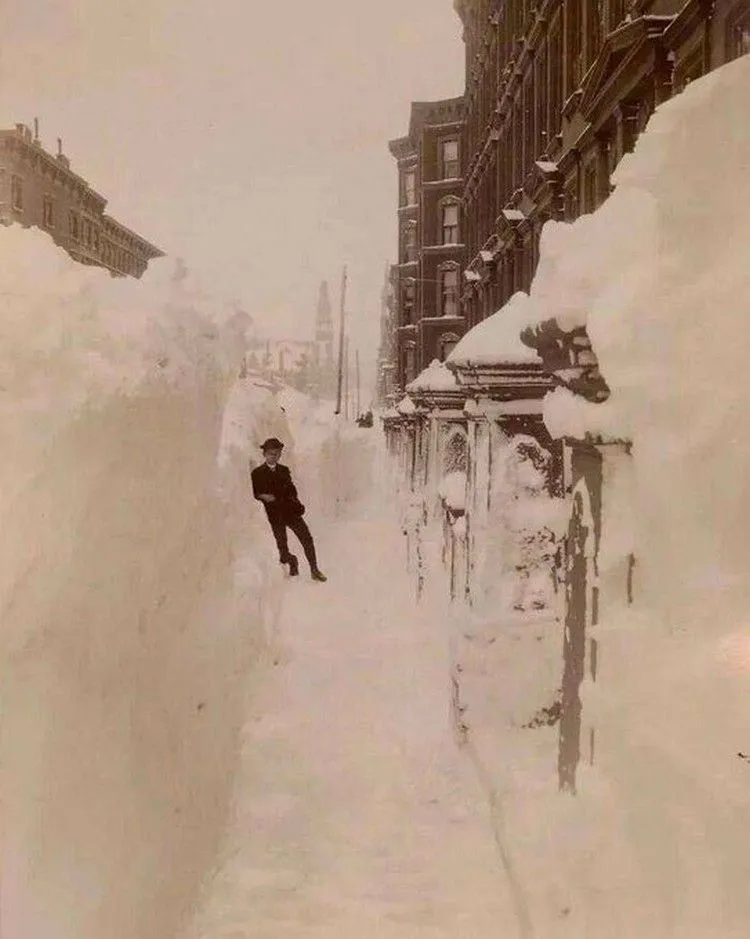 @throwaway3310957/reddit.com
@throwaway3310957/reddit.com
Telegraph lines were destroyed, leaving cities isolated from one another and exacerbating the difficulties of rescue efforts. It forced people to adapt to the harsh winter conditions and led to improvements in emergency preparedness.
Child Car Seats in the Early Years
In the 1940s, car seats for children were not designed with safety in mind. There were no regulations or safety standards, and many children rode in the front seat, sometimes even sitting on their parent’s lap. The seats available were often poorly constructed, offering little protection in case of a crash.
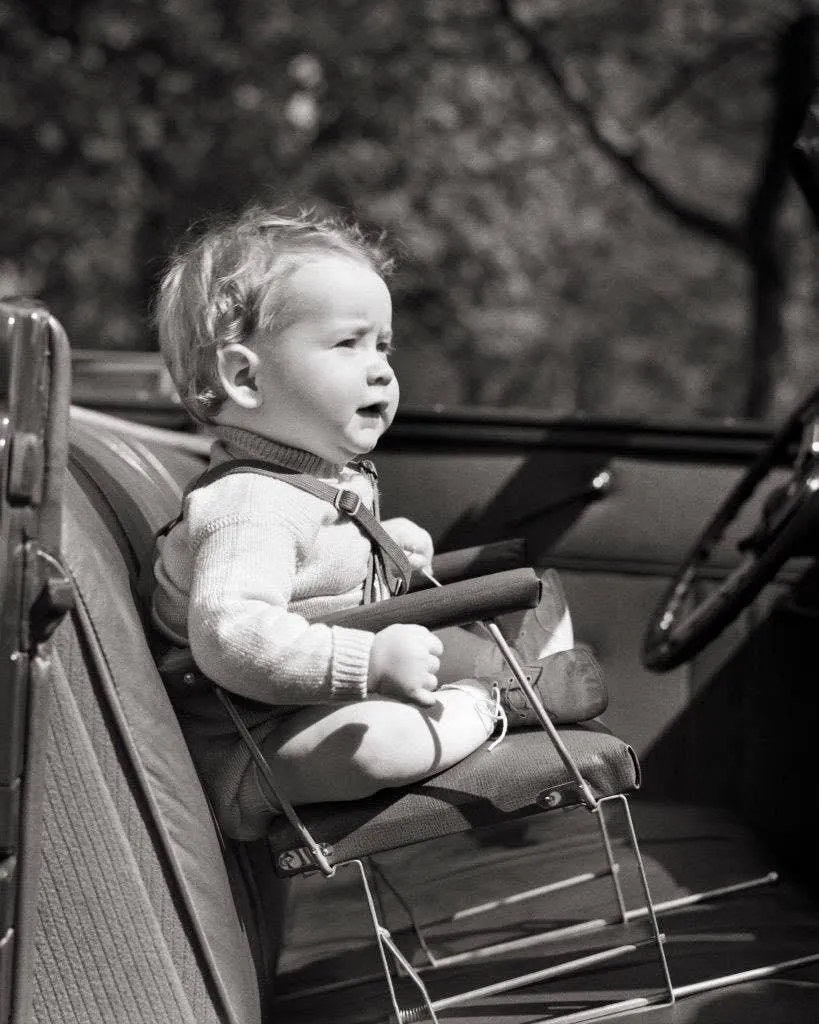
@zadraaa/reddit.com
Some early car seats were simply booster seats with no safety belts, leaving children vulnerable to injury. It wasn’t until later decades that awareness grew about the importance of proper child restraint systems, leading to the development of safer, more secure car seats.
Women Vote for the First Time
This day was the most significant in women's history. On November 2, 1920, women in the United States lined up to vote for the first time in a presidential election. This historic moment came after the passage of the 19th Amendment in 1920, which granted women the right to vote.
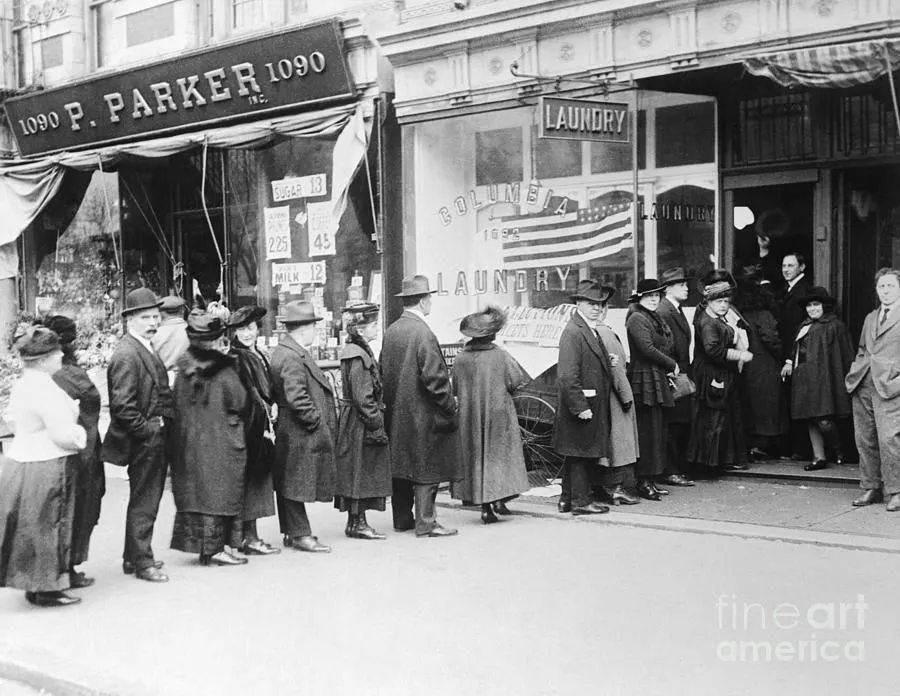
@Real-Championship331/reddit.com
In New York City and across the country, women eagerly participated in the election, marking a major milestone in the fight for women's rights. The 1920 election was a significant turning point, as it allowed women to have a voice in shaping the nation’s political future.
A Traffic Accident in the Netherlands
A rare 1914 photograph captures a car accident in the Netherlands, offering a stark reminder of the early days of automobile transportation. At that time cars were still novelties and roads were far from the modern infrastructure we know today.
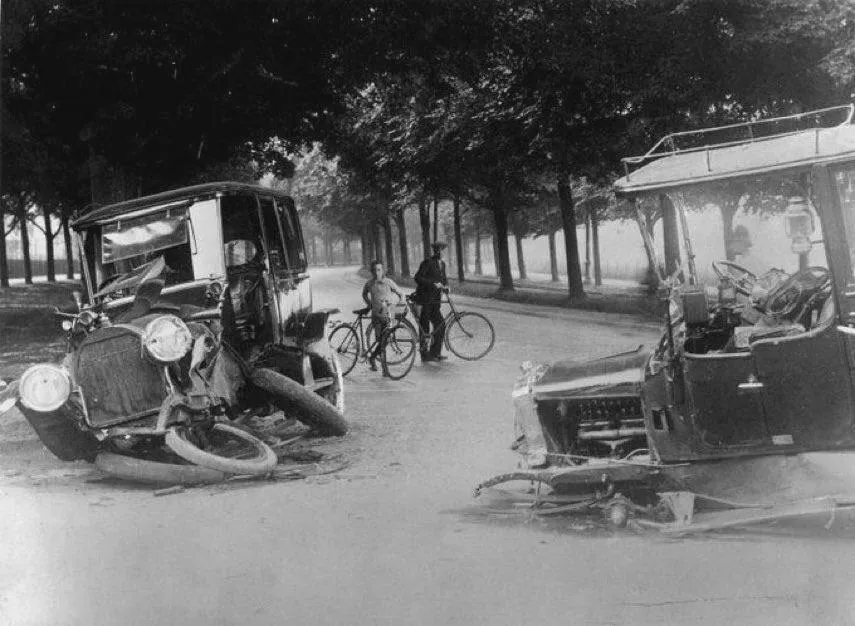
@litdollhot/reddit.com
With no seatbelts, airbags, or even standardized traffic rules, the risks of driving were significant. It's a stark contrast to the safety and convenience we take for granted today, a stark reminder of how far we've come.
Salute Replacing
The Bellamy Salute was introduced in 1892 when Francis Bellamy first wrote the Pledge of Allegiance. It involved extending the right arm forward with the palm facing outward, resembling the Roman salute. This gesture was used during the recitation of the Pledge in schools across the United States for several decades.
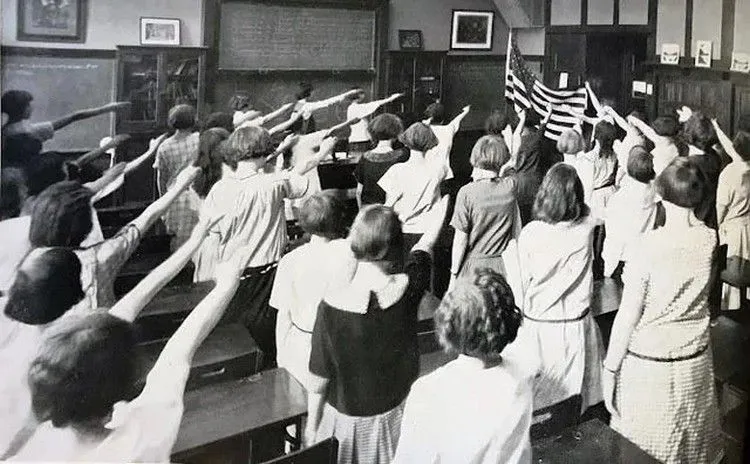
@Due-Explanation8155/reddit.com
However, during the rise of fascism in the 1930s and 1940s, the salute became controversial due to its resemblance to the Nazi salute. In 1942, in response to these concerns, the U.S. Congress officially replaced the Bellamy Salute with the hand-over-heart gesture, which has been the standard way to honor the flag during the Pledge of Allegiance ever since.
People were Separated by the Barbed Wire, and then by the Wall
This couple is shown holding hands across a fence of barbed wire as the Berlin Wall is being erected. This powerful image captured the emotional moment when Berlin was physically divided by the wall, separating families, friends, and loved ones. The barbed wire, which marked the beginning of the Wall’s construction, symbolized the sudden and painful partition of East and West Berlin during the height of the Cold War.
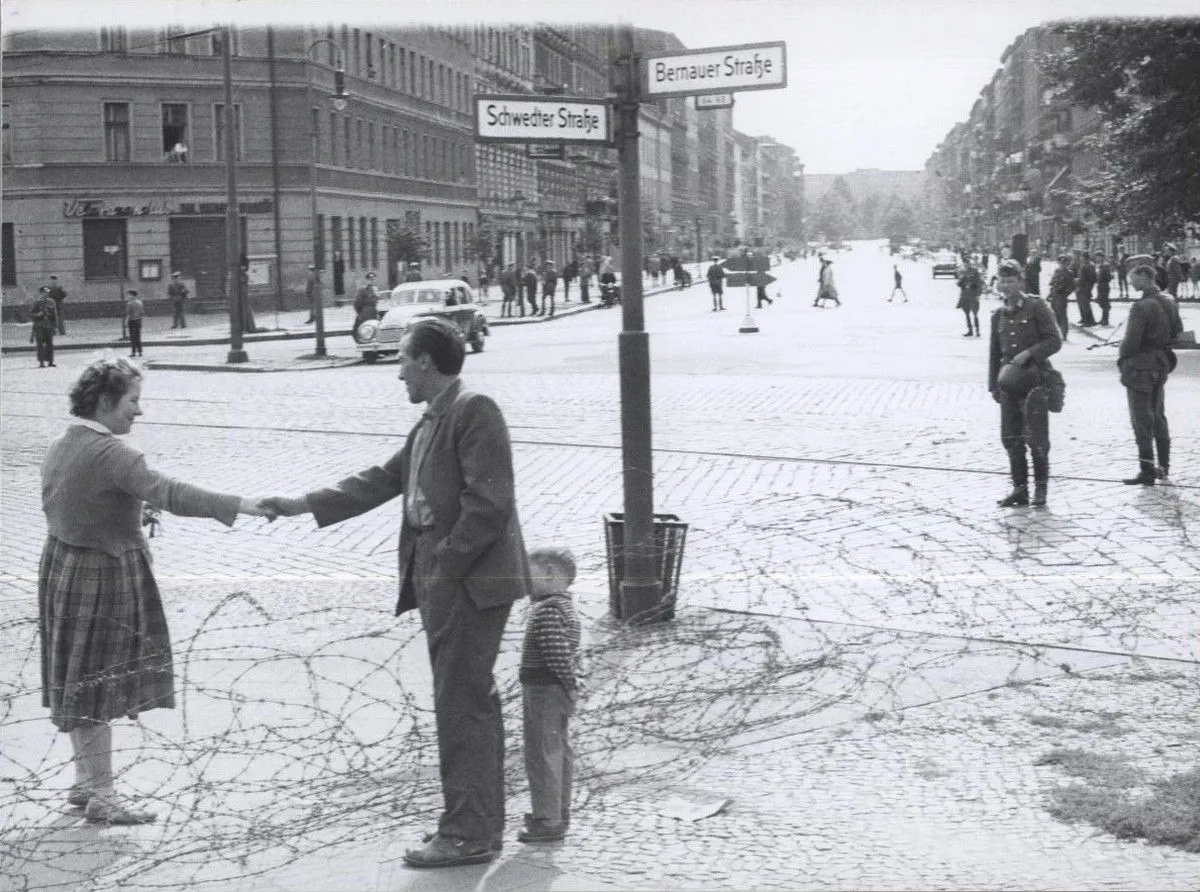
@ZERO_PORTRAIT/reddit.com
The wall itself became a symbol of the ideological divide between the communist East and the democratic West. This moment encapsulates the personal and political heartbreak felt by many as they faced the separation imposed by the wall, which would stand until 1989.
Unique Car Dining Experience
In the 1950s, The Track restaurant in Los Angeles provided a unique dining experience, delivering food straight to customers' cars using a conveyor belt. This innovative system embraced the growing car culture of the era, enabling customers to enjoy their meals without having to leave their vehicles.
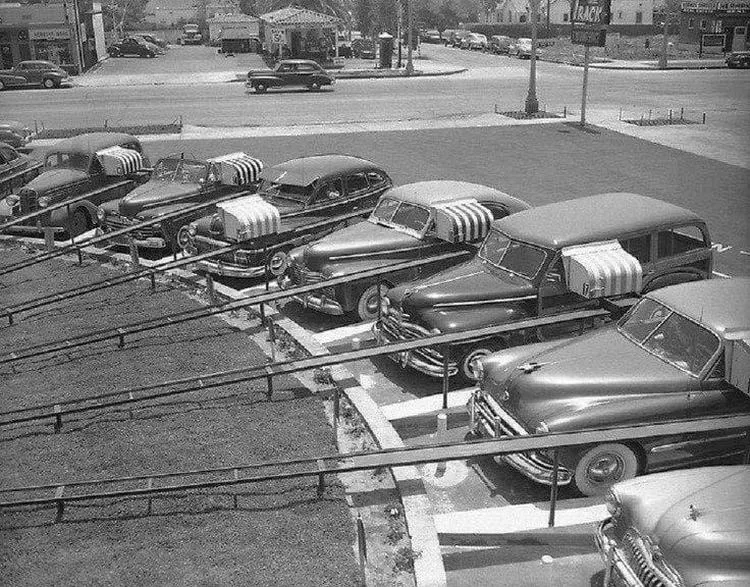
@ua-stena/reddit.com
This futuristic dining experience was a popular attraction, drawing crowds of curious diners who wanted to experience the novelty of eating in their cars. The Track restaurant was a testament to the innovative spirit of the 1950s, a decade marked by rapid technological advancements and a growing reliance on automobiles.
Infant Tempering
In Moscow, it was common for babies to sleep outdoors in cold weather as a way to boost their immune systems. Parents believed that exposing infants to fresh air, even in winter, helped strengthen their health. Babies were often bundled up warmly and placed in strollers or cribs outside, sometimes in parks or on balconies.
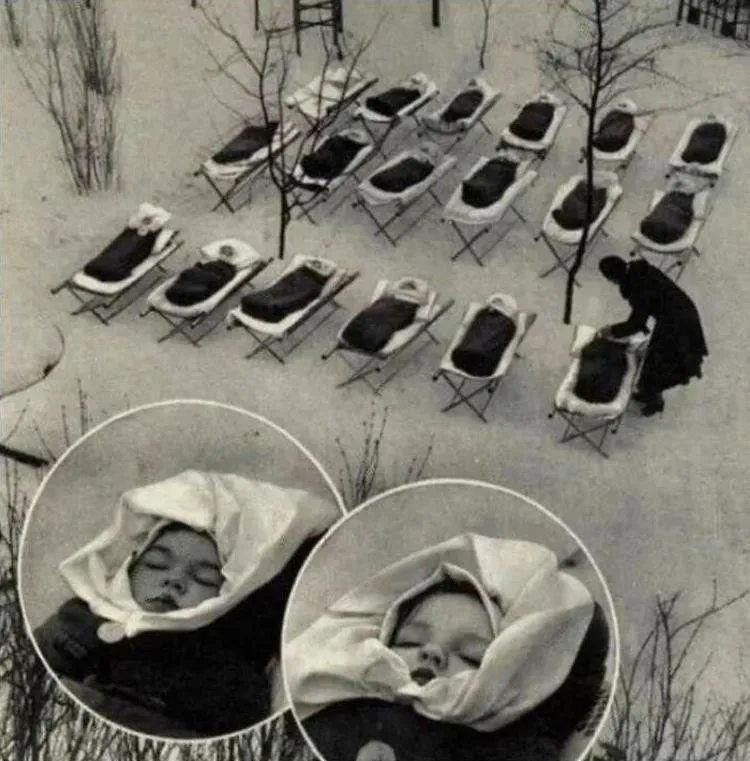
@BlondyCameron21/reddit.com
This practice was rooted in Soviet health recommendations, which promoted outdoor activities and fresh air for young children. Though it may seem unusual by today's standards, it was a widely accepted belief at the time that the cold air helped to improve a child’s resistance to diseases.
They were Called Yellow Stomachs
In the early 1900s, knife grinders, known for their physically demanding work, would lie down on the ground to carry out their tasks. This posture helped them avoid the back pain and discomfort caused by bending over all day.
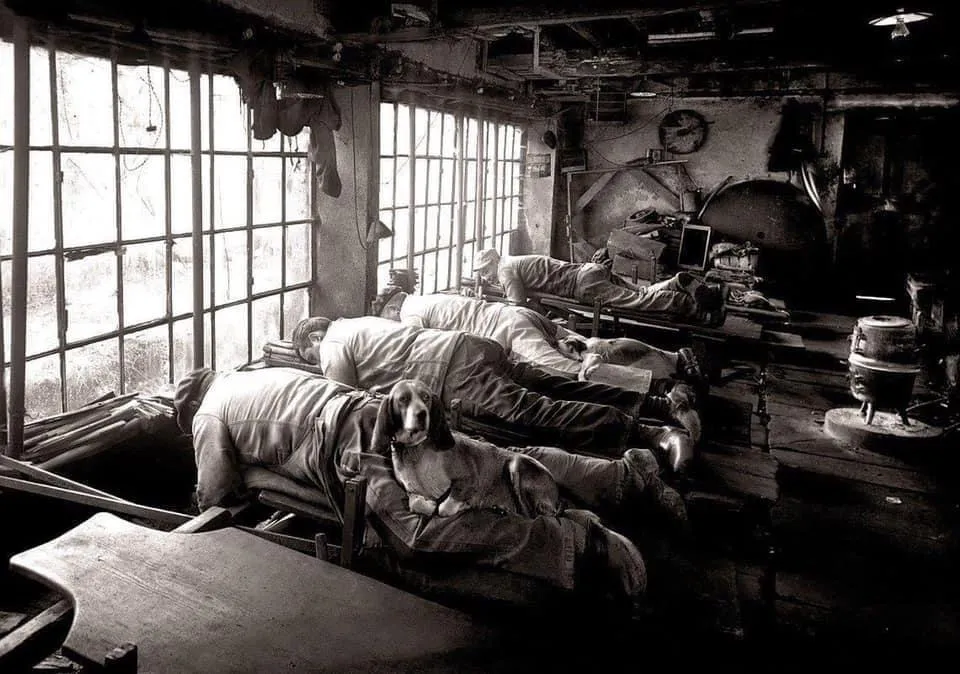
@zadraaa/reddit.com
As they worked, their dogs were encouraged to lie next to them, providing warmth and comfort to their legs during the cold hours. The "yellow stomachs" term referred to the workers' worn, weathered appearance, particularly the yellowed, stained skin from exposure to the elements.
Booths from Which Traffic Was Controlled
In the 1970s, the Ukrainian city of Chernivtsi had a unique traffic control system: manual traffic lights. Workers sat in booths at busy intersections, monitoring the flow of vehicles and manually switching the signals. This antiquated method, while quaint, was crucial for ensuring smooth traffic flow in the city.
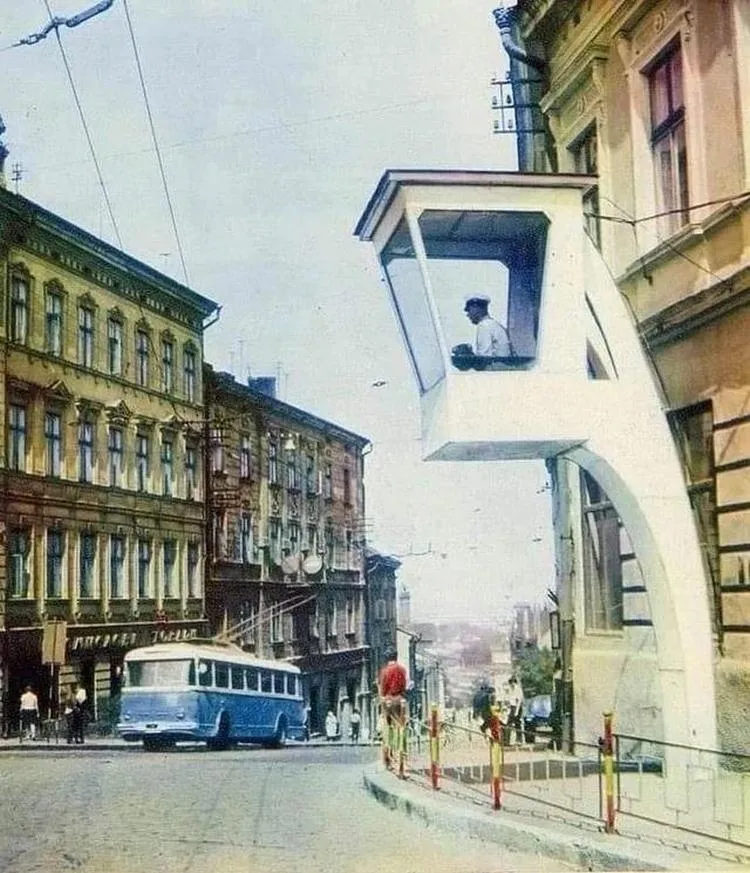
@bncout/reddit.com
Later, the traffic control booths were gradually dismantled, marking the end of an era of manual traffic management. The shift to automation made the process more efficient but the old booths remain a nostalgic symbol of a bygone era in urban life.
Earth from the Lunar Perspective
The Lunar Orbiter 1 spacecraft captured the first image of Earth from the Moon in 1966. This historic photo was a significant milestone in space exploration, offering a new perspective of our planet from the vastness of space. The spacecraft, launched by NASA, was part of a mission to map the Moon’s surface ahead of the Apollo lunar landings.
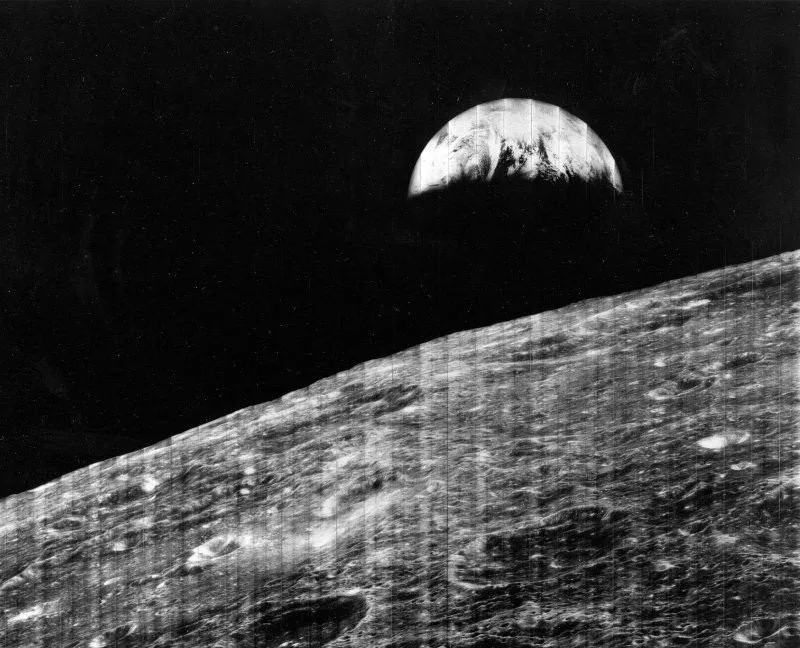
@ua-stena/reddit.com
The image showed Earth as a small, distant sphere against the blackness of space, emphasizing the fragility and isolation of our planet. It marked one of the earliest instances of space photography that helped shape our understanding of Earth’s place in the universe.
General Motors Urban Electric Car
It is a General Motors urban electric car getting a battery charge. It reflects the growing interest in electric vehicles during that time. In the background, on the left, is the EBS electric "Sundancer," a sleek, futuristic-looking electric vehicle.
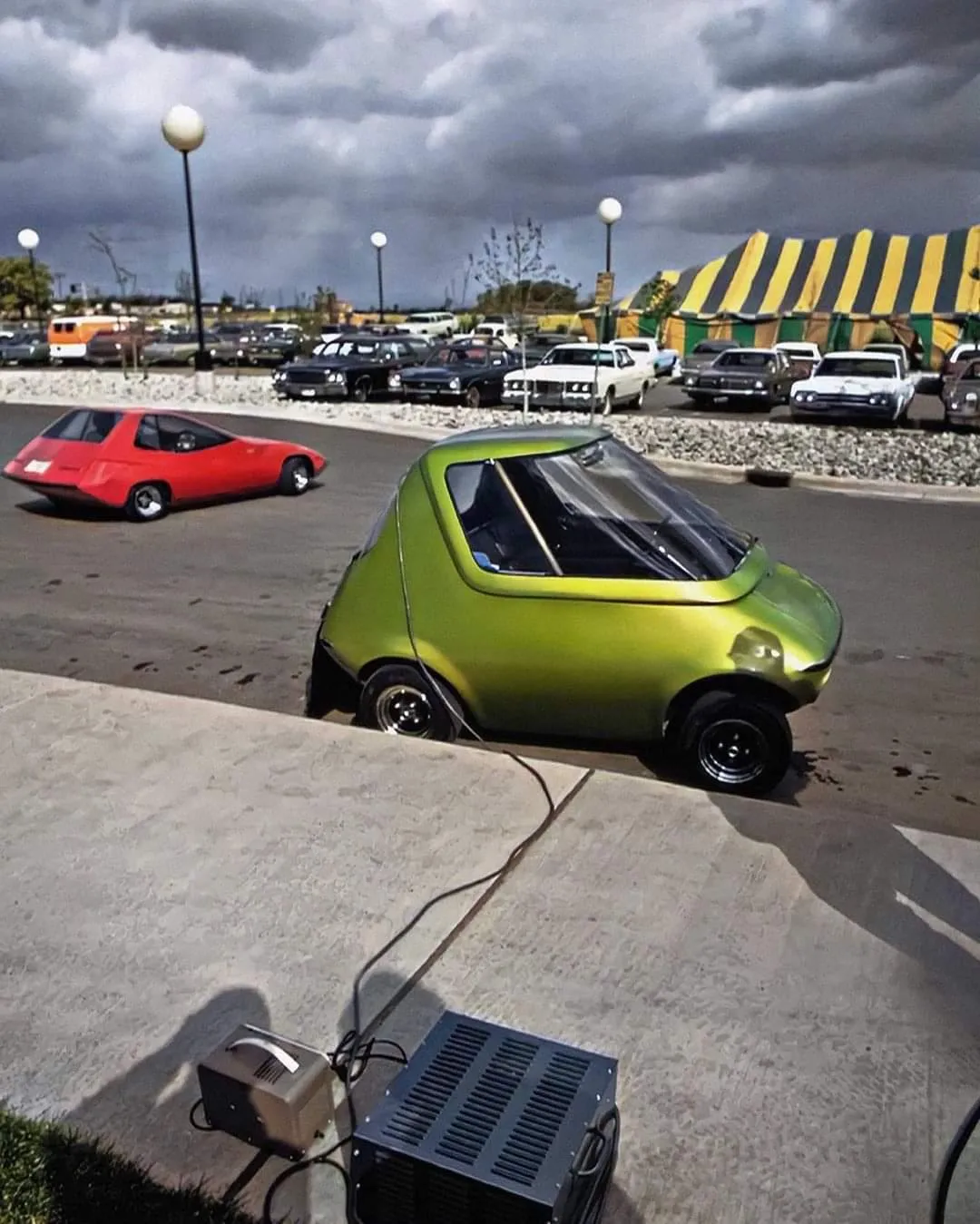
@zadraaa/reddit.com
The image shows a time when electric cars were still being developed. Companies were looking for alternative energy sources to reduce the need for gasoline. This idea would become more important in the following decades.
Protests against School Integration
The photo shows a man speaking into a microphone in front of a crowd at the Arkansas State Capitol, protesting school integration. The signs held by the crowd read "Race mixing is communism" and "Stop the race mixing March of the Antichrist."
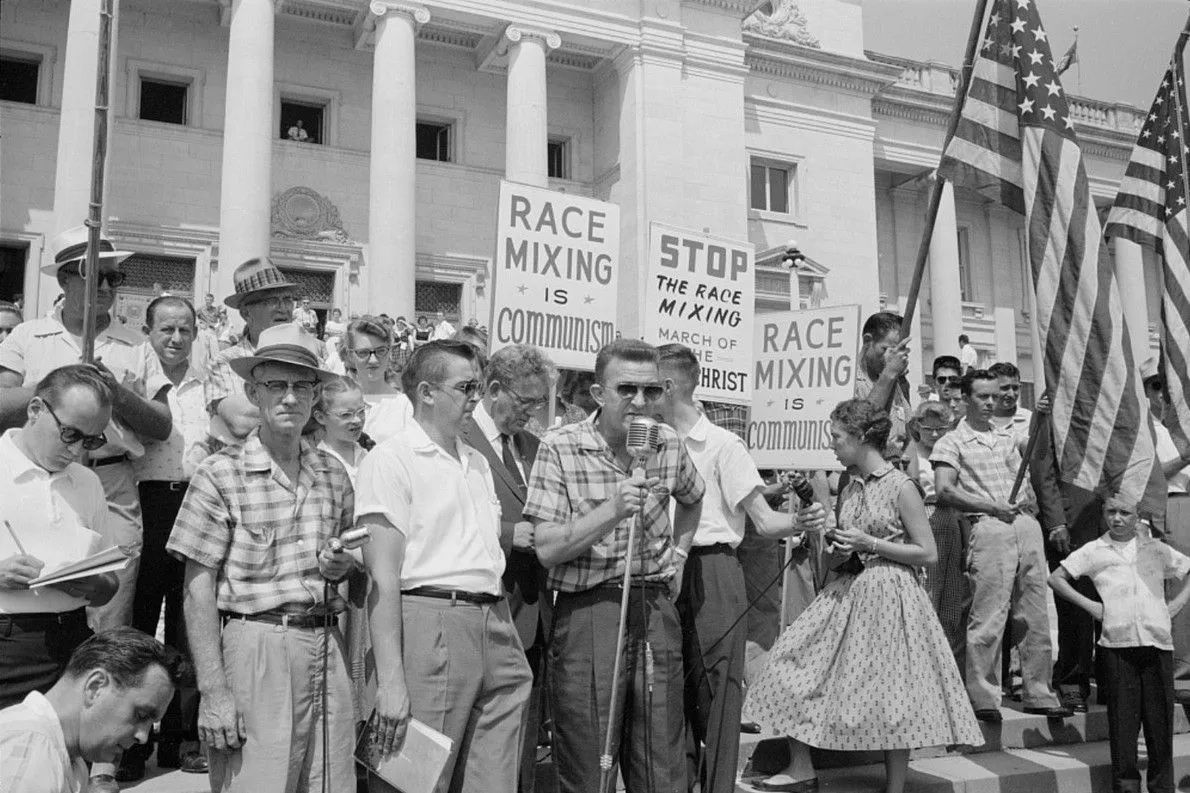
@ZERO_PORTRAIT/reddit.com
This protest took place in Little Rock, Arkansas, during a time of heightened racial tension in the 1950s and 1960s, as the U.S. was working to desegregate schools. The signs reflect the strong opposition to integration by some groups, who used inflammatory rhetoric to resist the changes brought about by the Civil Rights Movement.
First UAVs
In 1945, the U.S. military began testing early unmanned aerial vehicles (UAVs), also known as "robot planes." These planes were used for training and reconnaissance. One early model needed a manned plane to fly nearby and control it with a remote guidance system. The pilot in the manned plane would transmit signals to control the UAV.
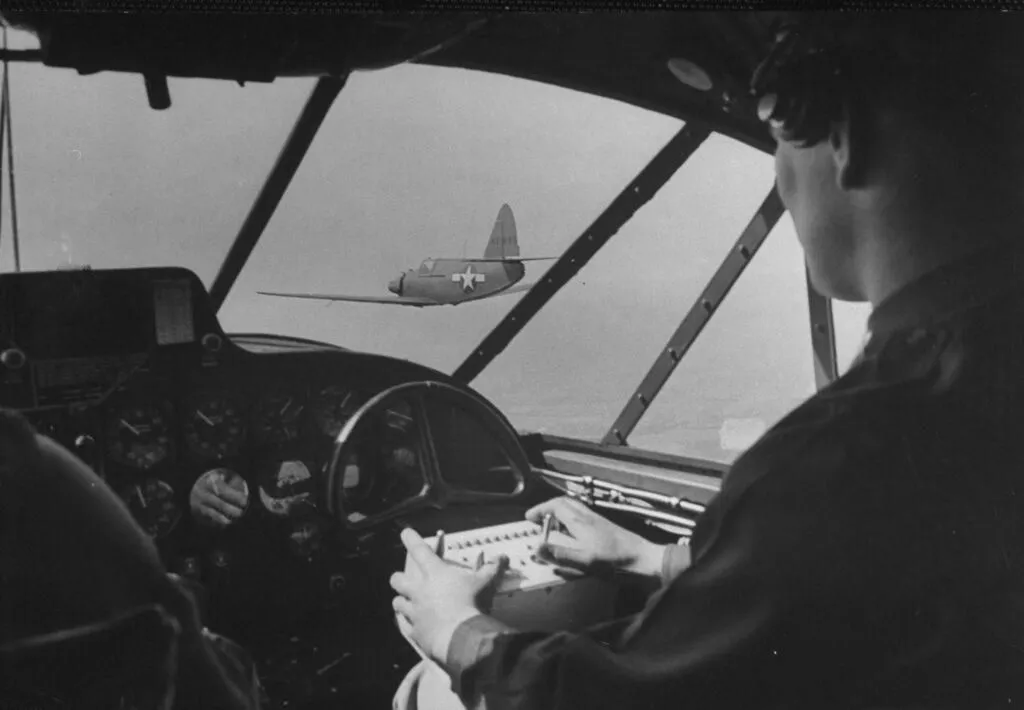
@Baby-Girl188/reddit.com
These early UAVs were part of efforts to develop new technology for war. The idea of controlling planes remotely helped lead to the development of modern drones, which are now used in the military, for surveillance, and in other industries.
National Dutch Shoes
The image shows children from the Netherlands wearing traditional wooden shoes, known as "clogs." Clogs were a common part of Dutch dress, especially in rural and working-class areas. Made from wood, they were valued for their durability and practicality.
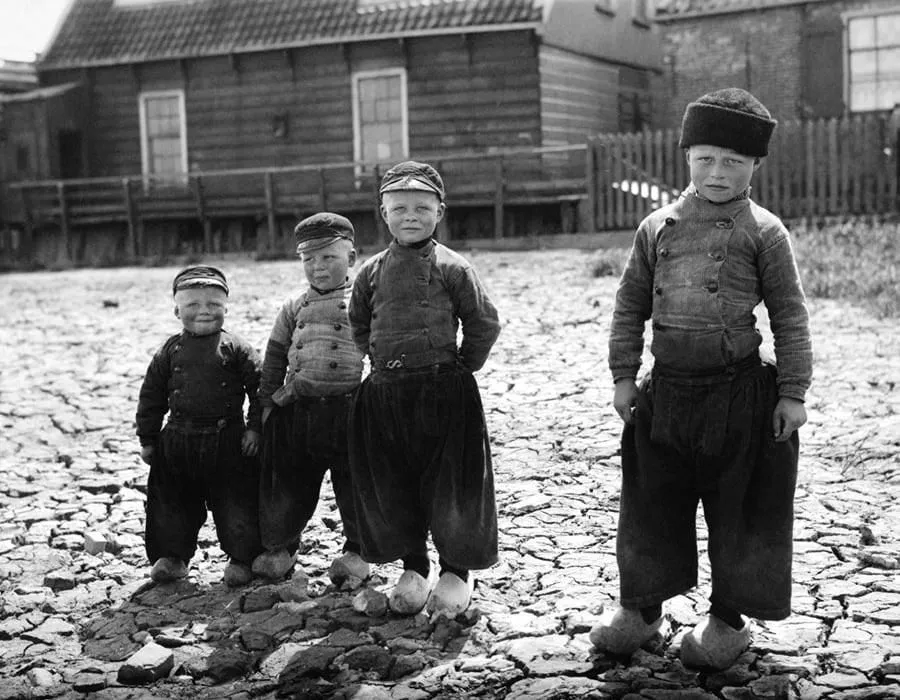
@zadraaa/reddit.com
Clogs were especially useful for labor-intensive jobs like farming and factory work. The photo not only highlights the cultural significance of clogs in Dutch society but also offers a look into the everyday lives of the people.
Dental Services in the Far Years
Nowadays, it is hard to imagine children having their teeth pulled with a thread at home. But in 1897, such things were very popular. The services of dentists were expensive and not available to many people. So, people had to make do with their own efforts.
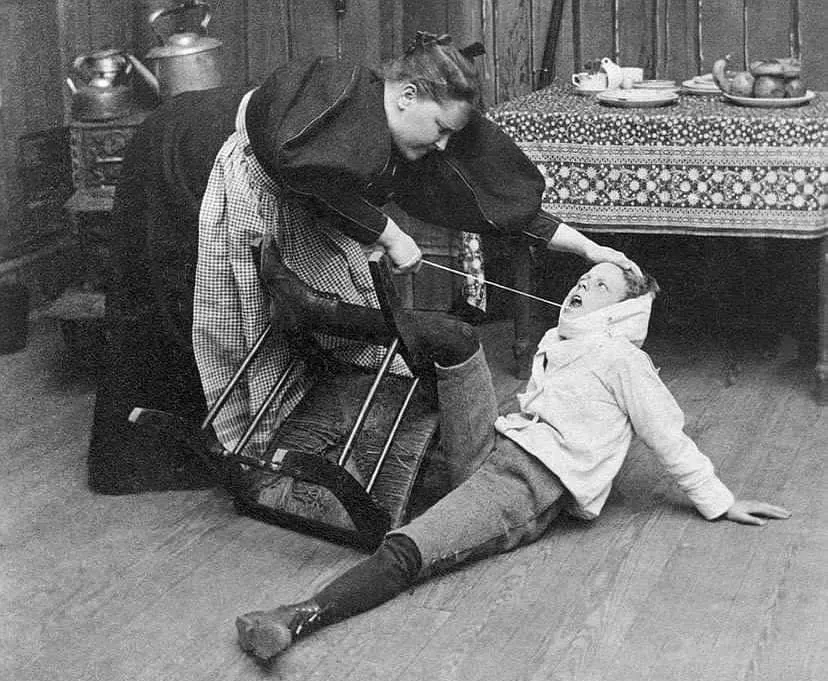
@Cherrylovesweet/reddit.com
In the photo, the mother is pulling out her son's tooth with a thread. It is not known why they decided to preserve this moment, because it does not look like a very warm moment. However, we now have indisputable evidence of such procedures, which are immortalized in history.
Be Friends?
‘Let us be friends’ was the headline of an article in the Daily Mirror on 29 February 1936, which described a speech by Adolf Hitler. The Chancellor of the Third Reich stated that he wanted lasting peace and friendship between Germany, France, and England.
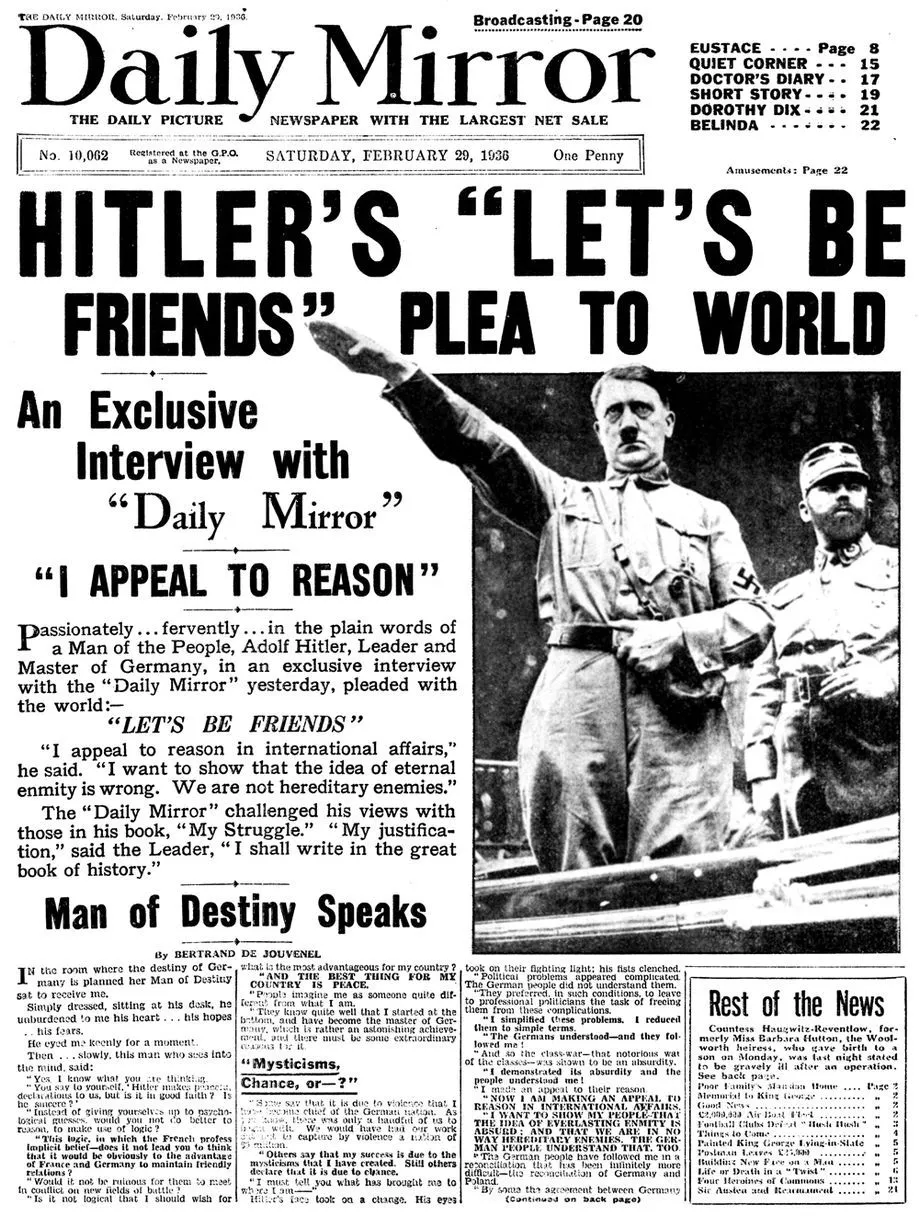
@RPBot/reddit.com
He assured the public that Germany was not aggressive and had no plans for war. However, just three and a half years later, Germany invaded Poland, triggering the outbreak of World War II. This invasion contradicted Hitler's earlier promises of peace and marked a significant turn towards Nazi aggression and expansion.
Flying Saucers or Fuel Stations?
The ordinary gas stations in the USSR were often architectural masterpieces. These stations kept their functionality despite their unique looks. In 1977, at least two of these stations were built in Kyiv. They were comfortable and easy to use for drivers.
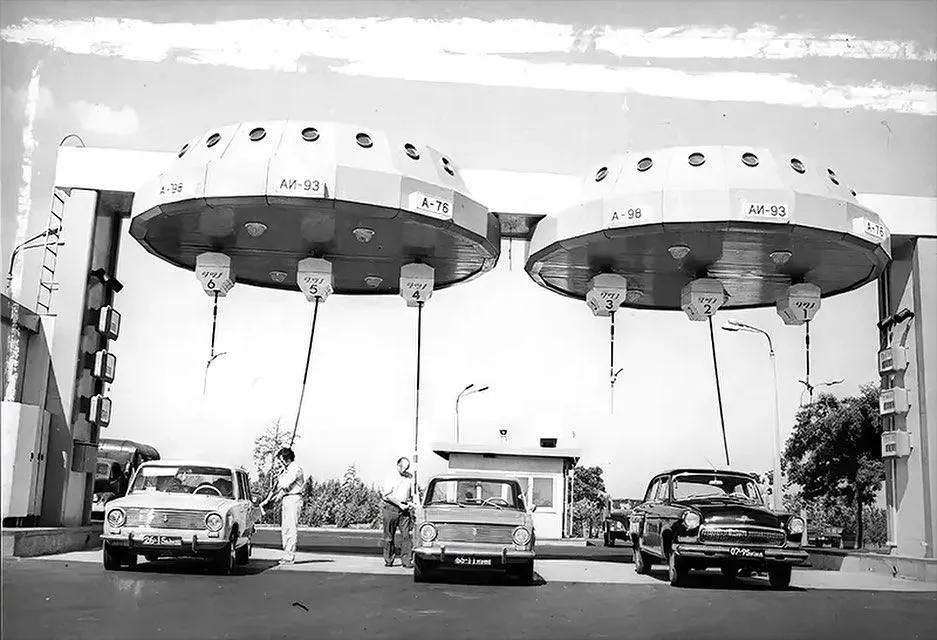
@zadraaa/reddit.com
A distinctive feature was their adaptable fueling system. Drivers could park on either side of the station, and a hose would descend from the futuristic canopy. After settling the payment with the operator, the fueling process would commence.
A Metal Cobweb Over the City
New York City had many wires hanging above the streets in the 1800s. They were used for telegraphs, lighting, and early telephones. However, the Great Blizzard of 1888 damaged many of these wires.
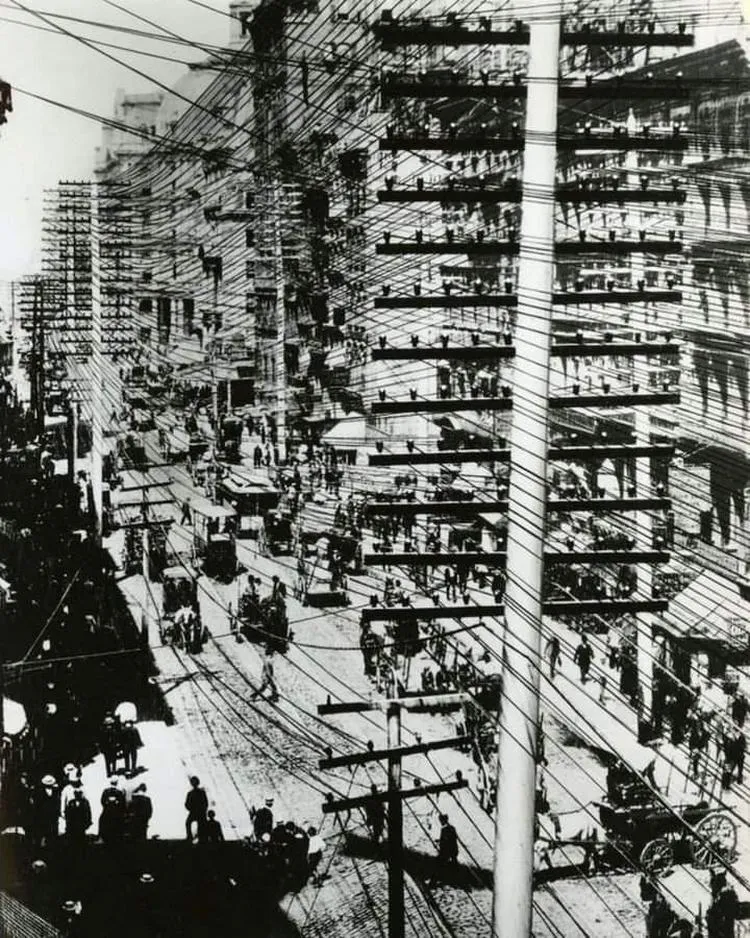
@Ebonystealth/reddit.com
Rather than rebuild them above ground, the city decided to move them underground. This created a huge hiding network of wires, pipes, and other utilities. Today, under the city streets is a complicated mess of these things. This was done to protect the city from future storms.
The Strangest Toy You Can Imagine
There was a time in France when children's pastimes were somewhat peculiar. In 1959, French children were given access to a unique and somewhat surprising toy - a small working guillotine. This miniature version of the historical device allowed children to ‘cut off the heads’ of small objects such as dolls or vegetables.
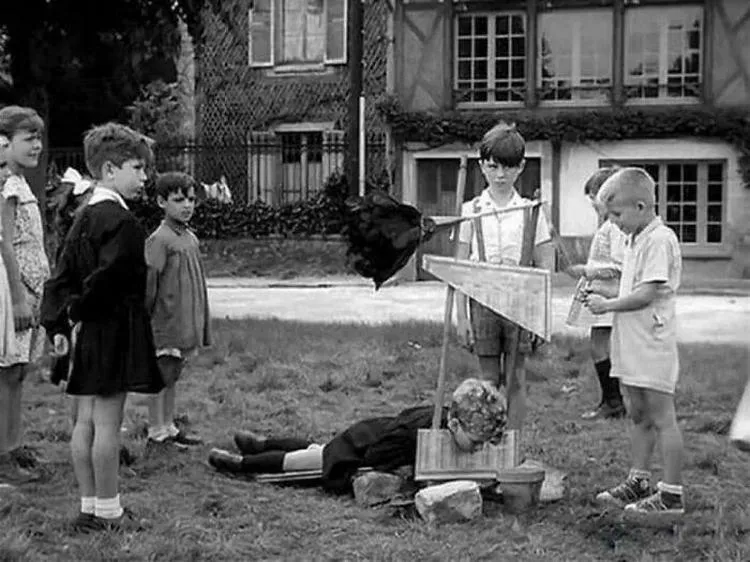
@zadraaa/reddit.com
The toy was very popular despite its dark origins. Children put not only small objects on the guillotine but also their heads. Fortunately, there were no accidents. Later on, this strange toy disappeared from the shelves.
A Helmet That Allows Safe Communication While Riding
An innovative motorcycle helmet was created in the 1940s and it became a real revolutionary breakthrough. The model included an integrated microphone and speaker system. This early technology was meant to make riding safer and easier.
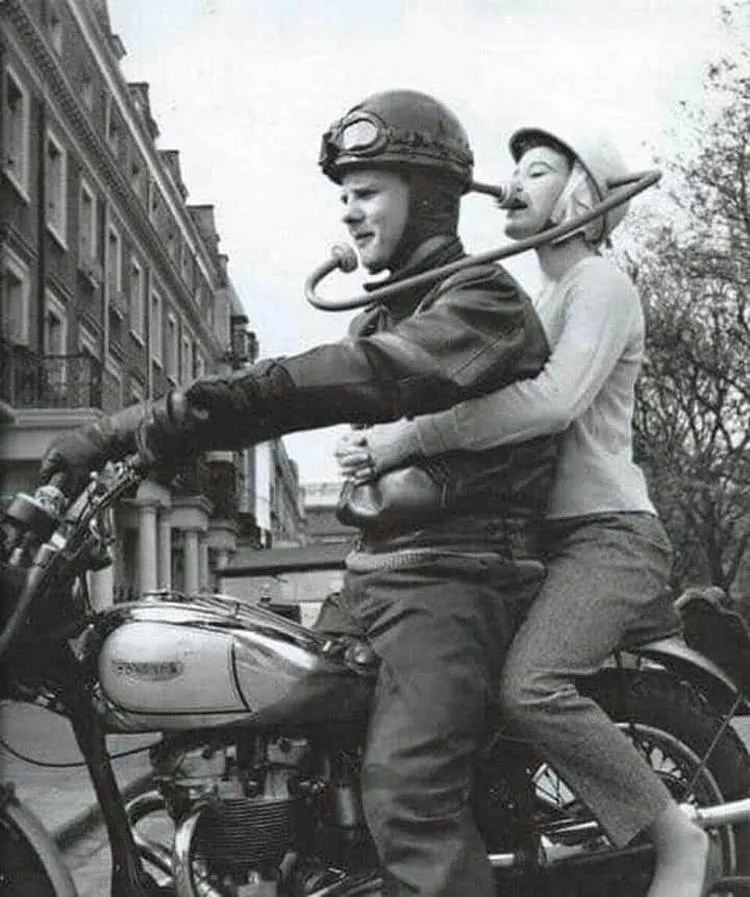
@zadraaa/reddit.com
It let riders and passengers talk without shouting over the engine noise. It was an important step in the evolution of motorcycle equipment, enhancing the overall riding experience.
Childhood Leisure in Gilded Age New York
This 1875 photo shows a young girl riding in a goat-drawn cart in Central Park. It was a beloved attraction of many people during the Victorian era. The goat carts were part of the park's vision to be a public space open to all, not just the wealthy.
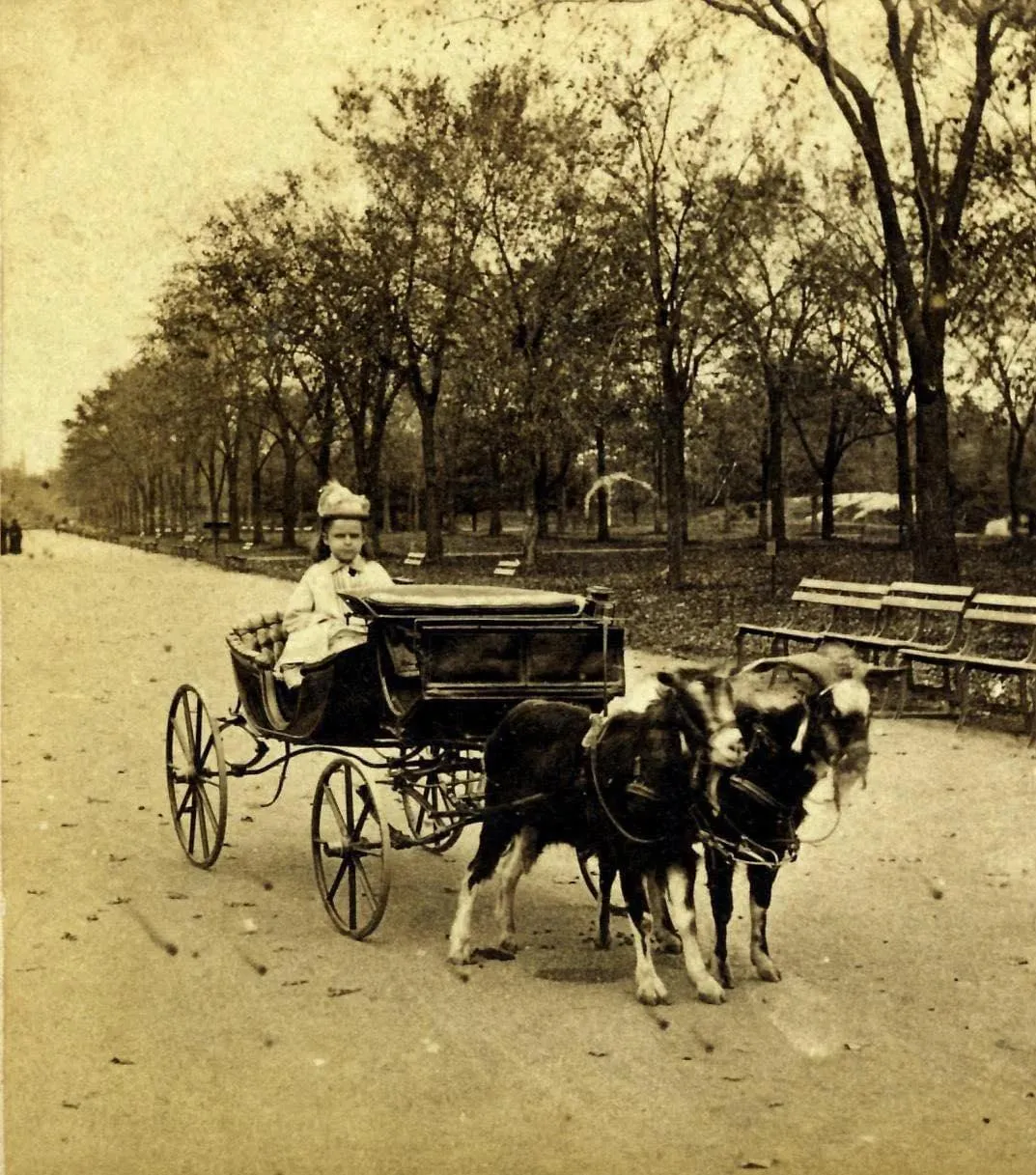
@zadraaa/reddit.com
While the rich had private carriages and horses, goat carts offered an affordable and fun ride for children of all social classes. The carts became a charming tradition in the park, symbolizing its role as a revolutionary and inclusive space.
Allied Airmen who are not Afraid of Challenges
The Boeing B-17 "Flying Fortress" of the 379th Bomb Group was heavily damaged during a mission over German targets on June 28, 1944. Despite the extensive damage to the aircraft, pilot Lieutenant Karl Becker, shown in the photo inspecting the wreckage, displayed exceptional skill and determination.
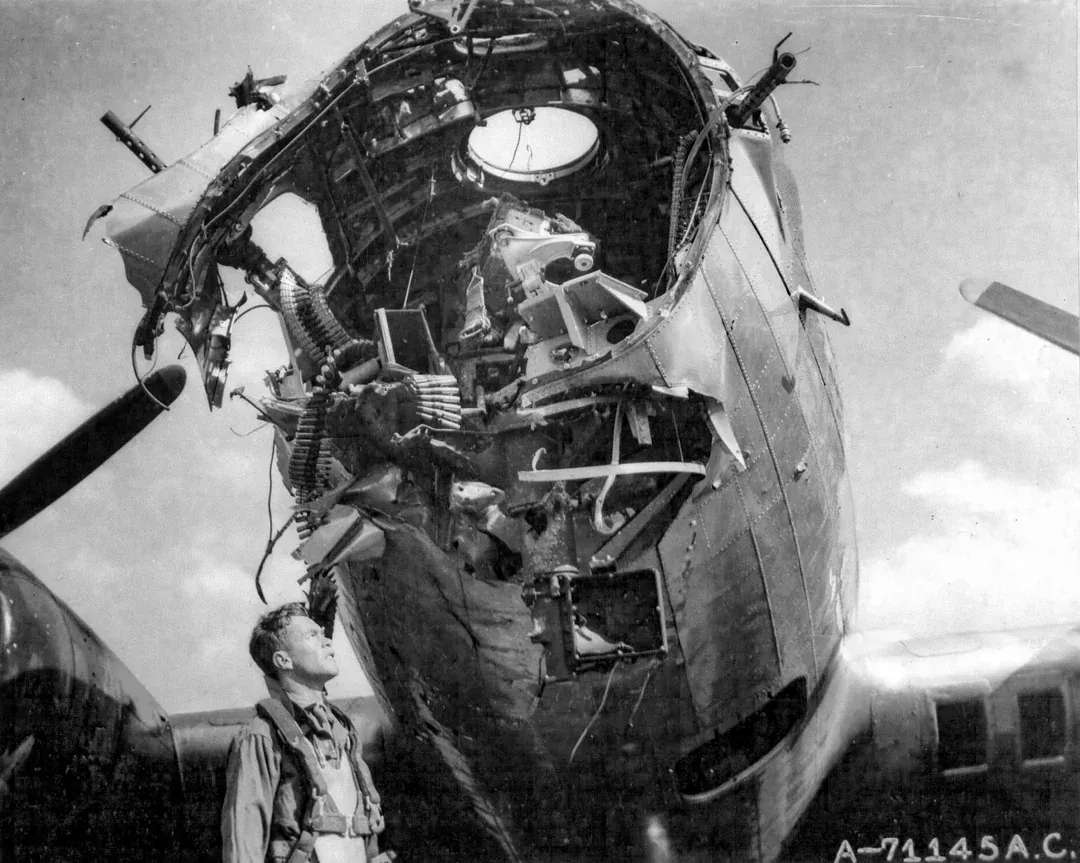
@UrbanAchievers6371/reddit.com
He successfully flew the damaged bomber back to base in England. The strength of both the aircraft and its crew shows the determination of Allied airmen in World War II. Despite facing extreme conditions, they continued their missions under dangerous circumstances.
Fans of Riding Monocycles
At the time, monocycles were a unique form of transport and entertainment. Those who rode them demonstrated agility and coordination, like this man in the 1938 photo. Back then, monocycles were popular among circus performers and acrobats and were sometimes used for novelty in public performances.
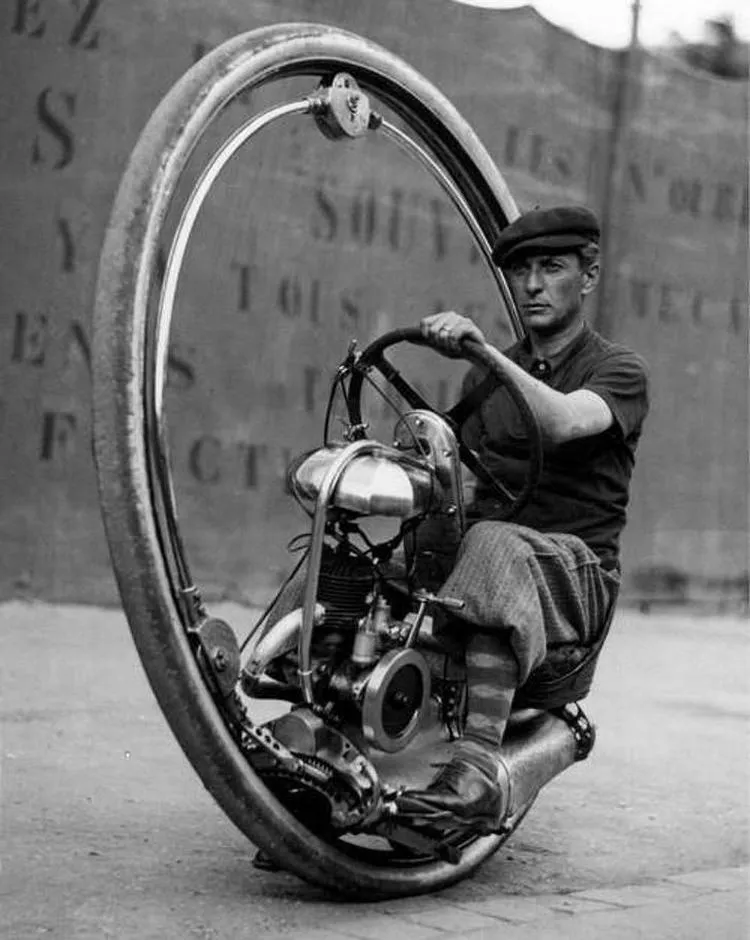
@zadraaa/reddit.com
The popularity of this mode of transport at that time was often associated with the stages of development of circus art, where even the smallest elements of tricks were of great importance for impressing the public. In addition, monocycles attracted attention not only because of their unusual design but also because of the complexity of their operation.
Children Build a Pyramid with Money
In 1923, Germany experienced one of the most severe instances of hyperinflation in history, which caused the value of the German mark to plummet drastically. The currency lost so much value that people had to use large bundles of banknotes for everyday purchases. In some cases, it was cheaper to burn the money for heat than to buy real goods.
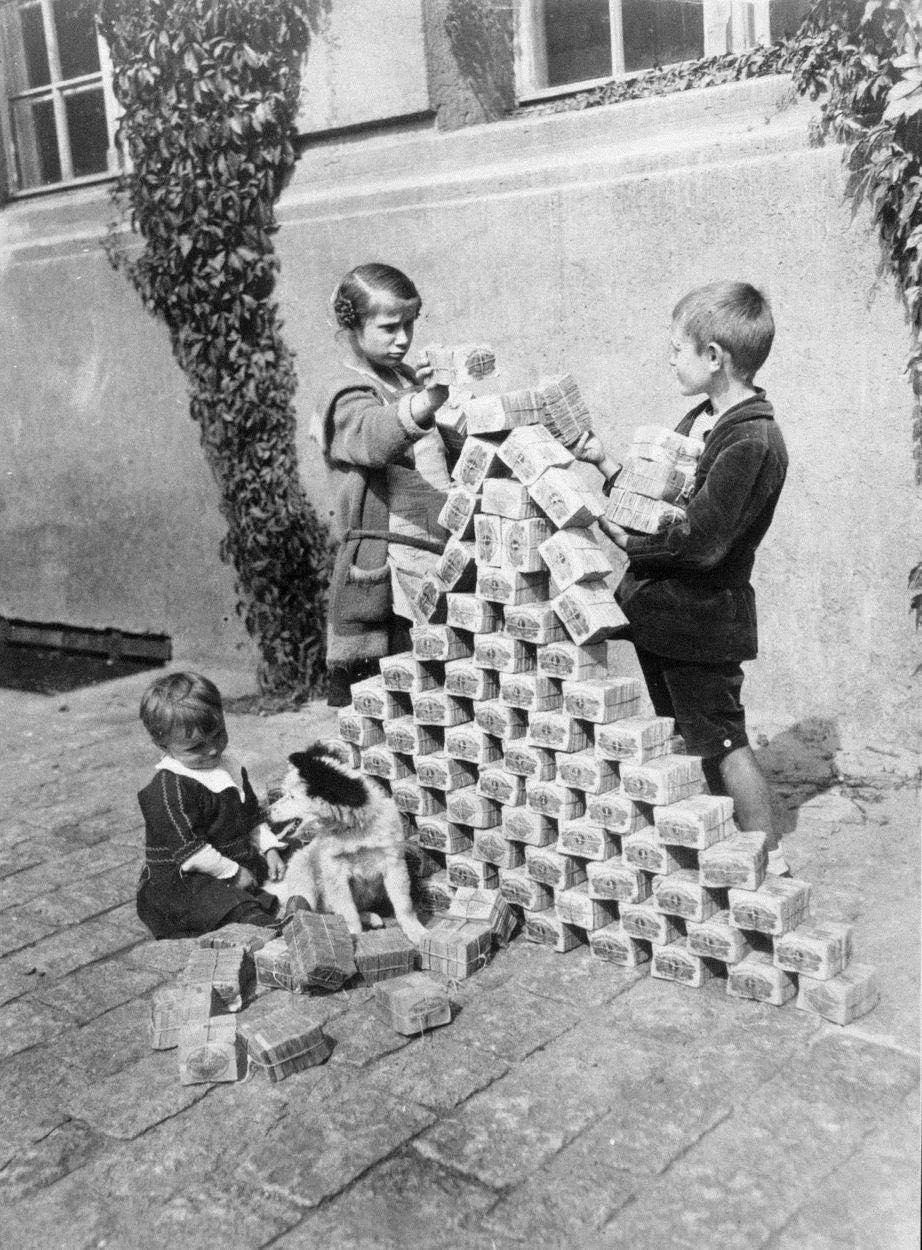
@zadraaa/reddit.com
Children, as shown in photographs from the time, would often play with these bundles of worthless money. They would build forts, make paper airplanes, or toss the bills around. The children didn’t understand the serious economic crisis their country was going through.